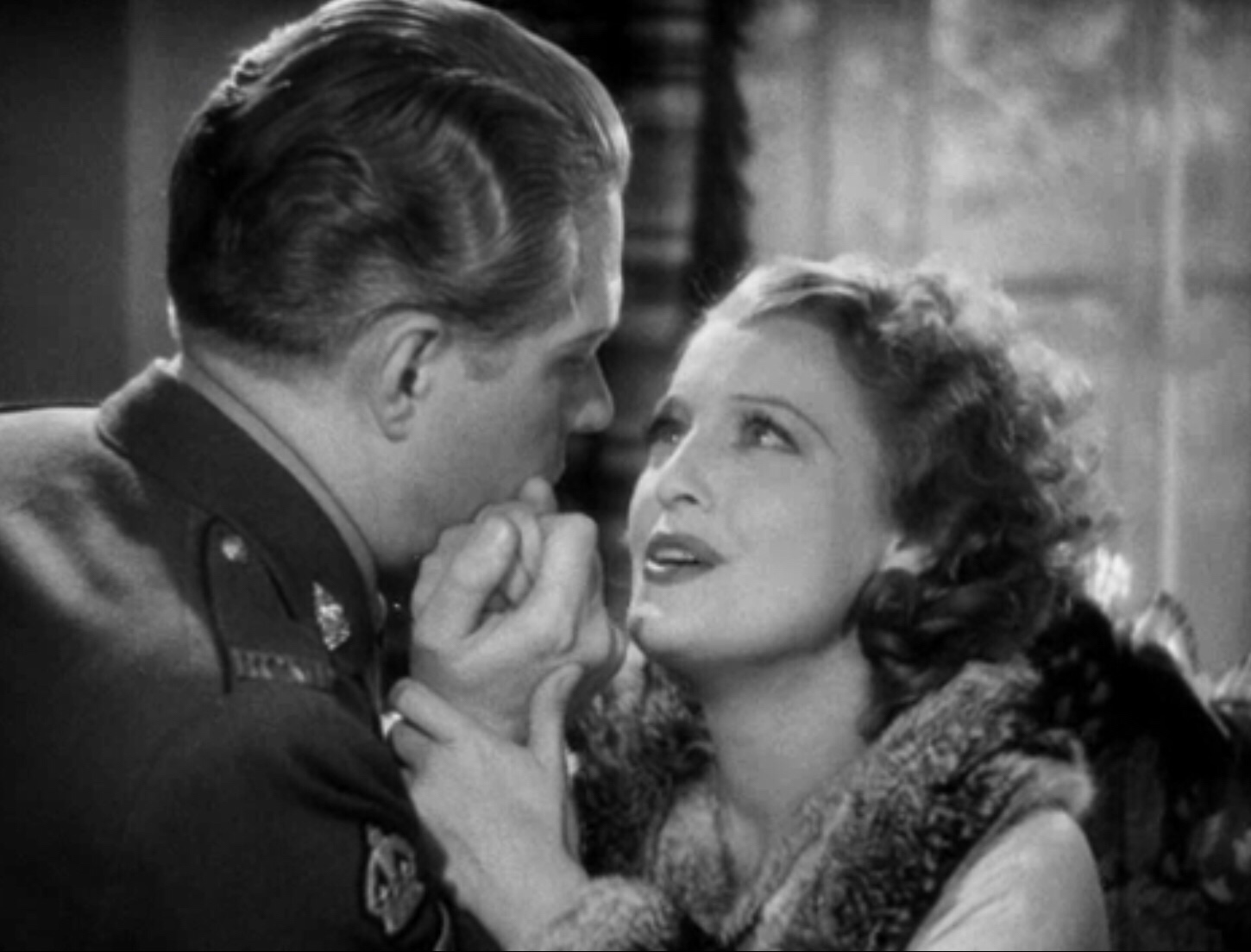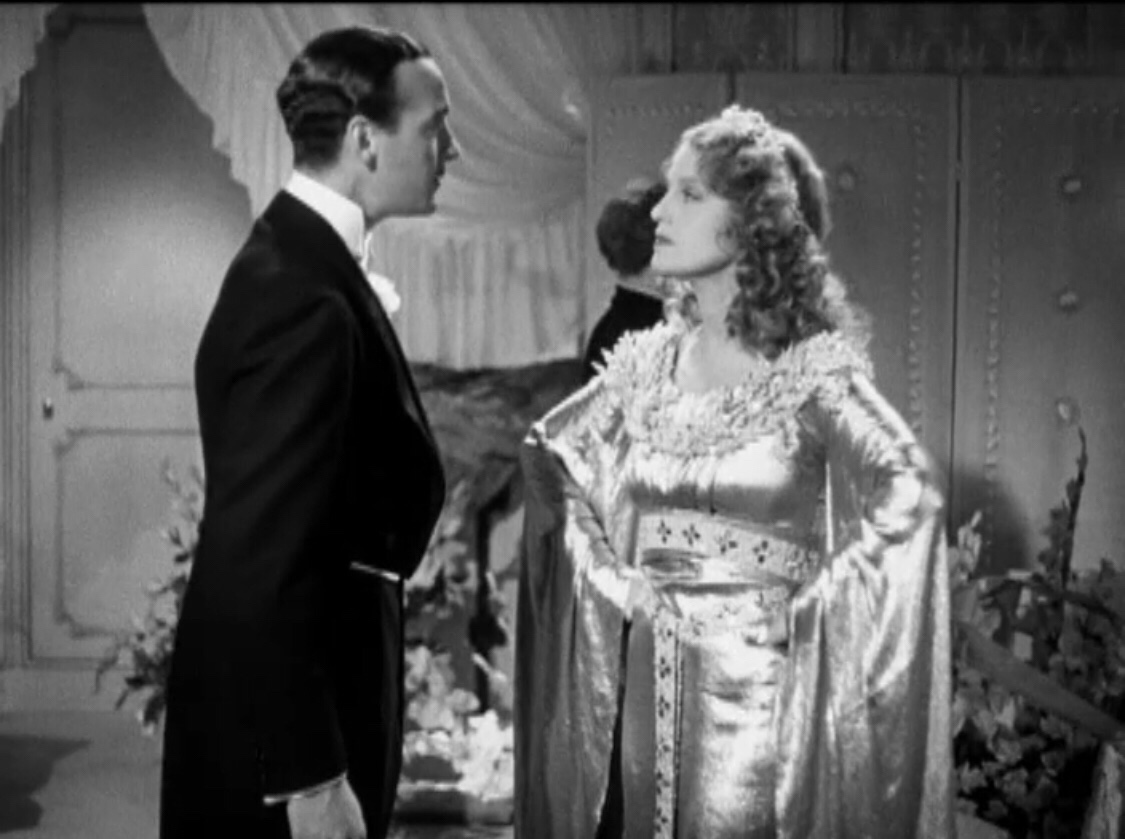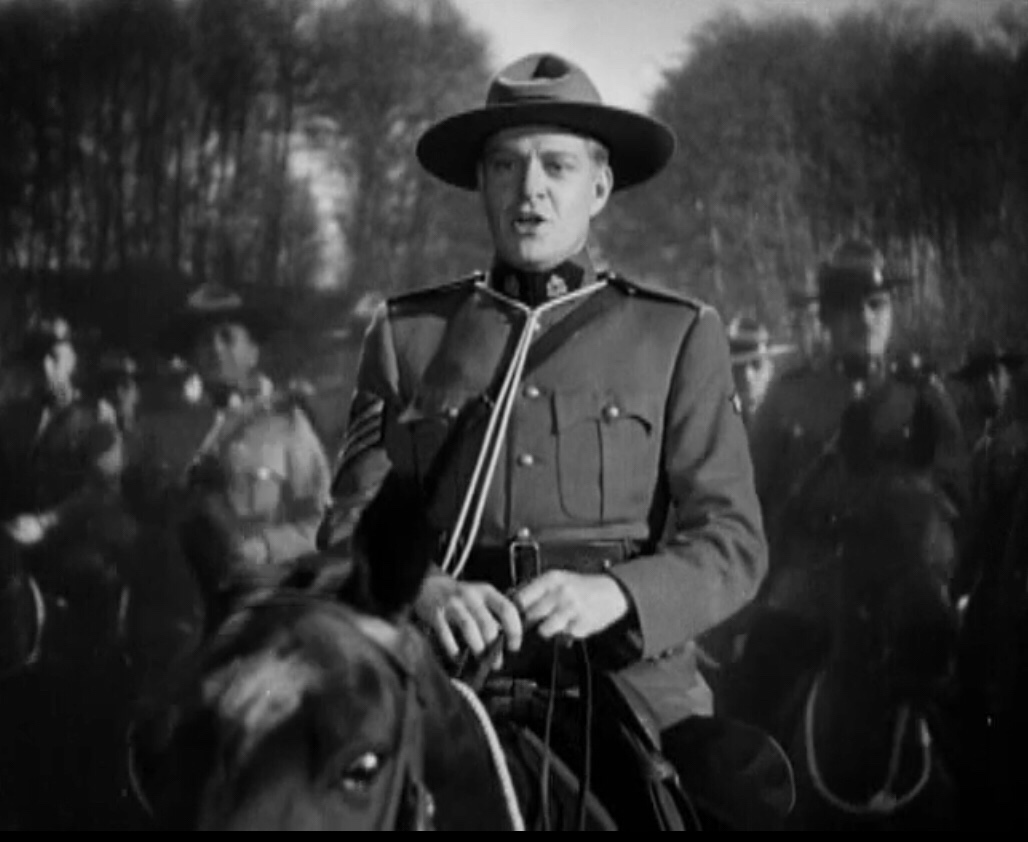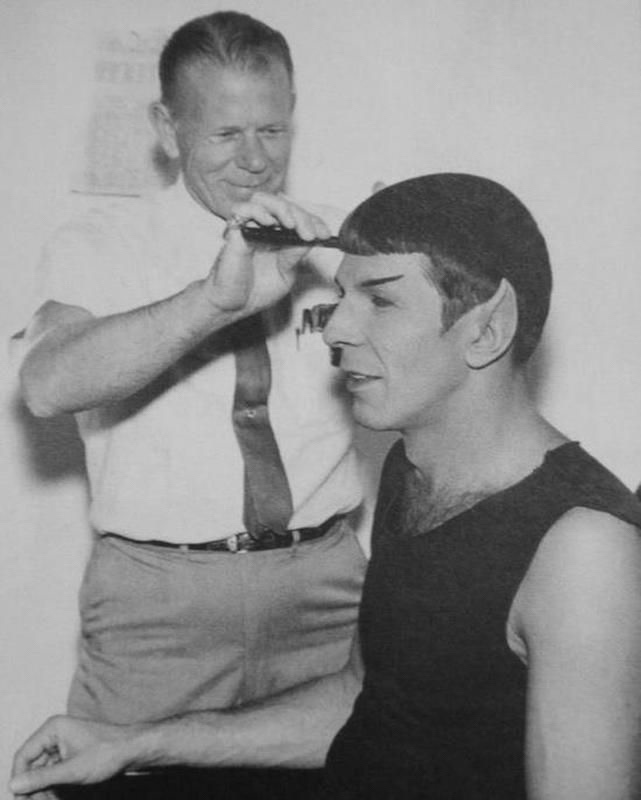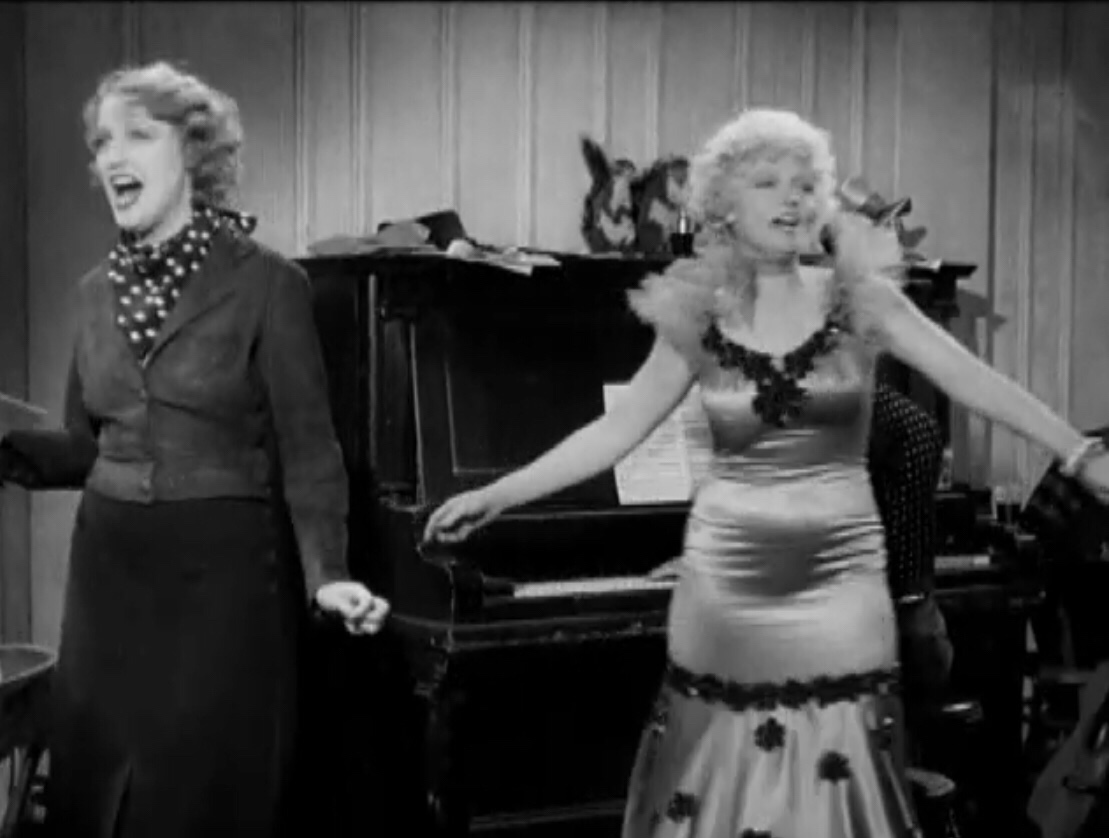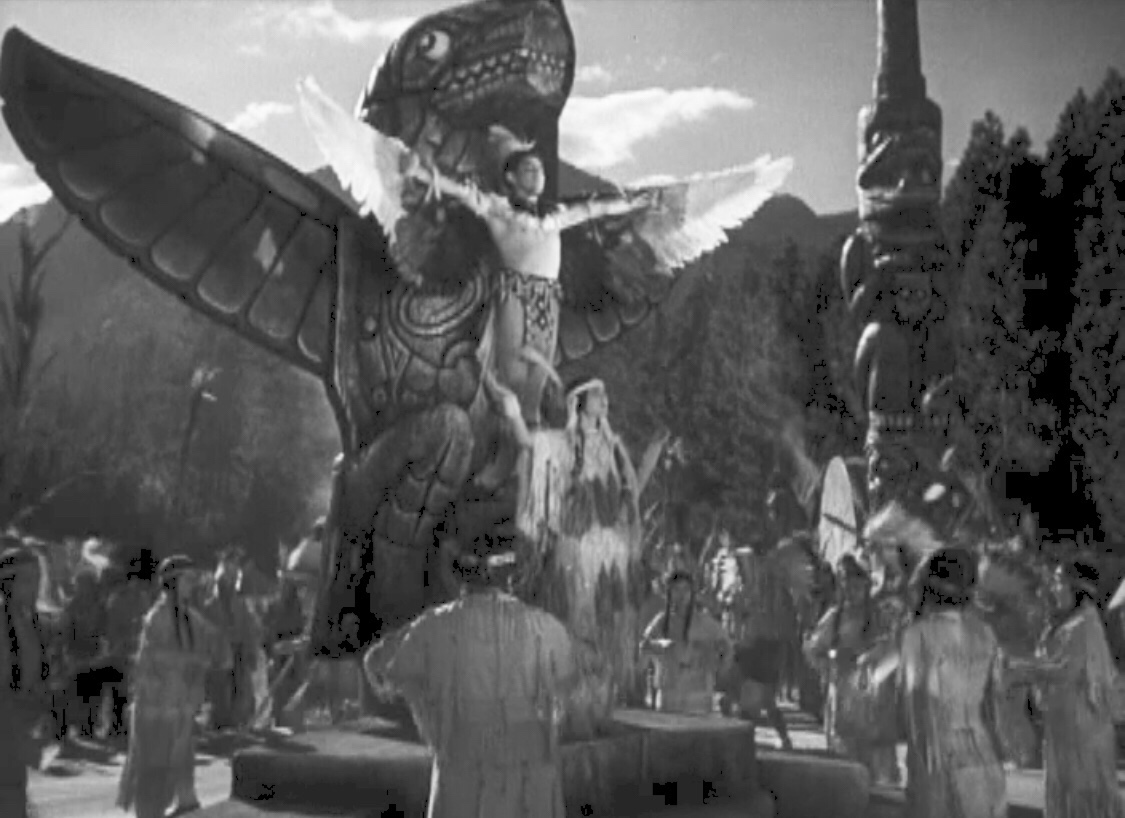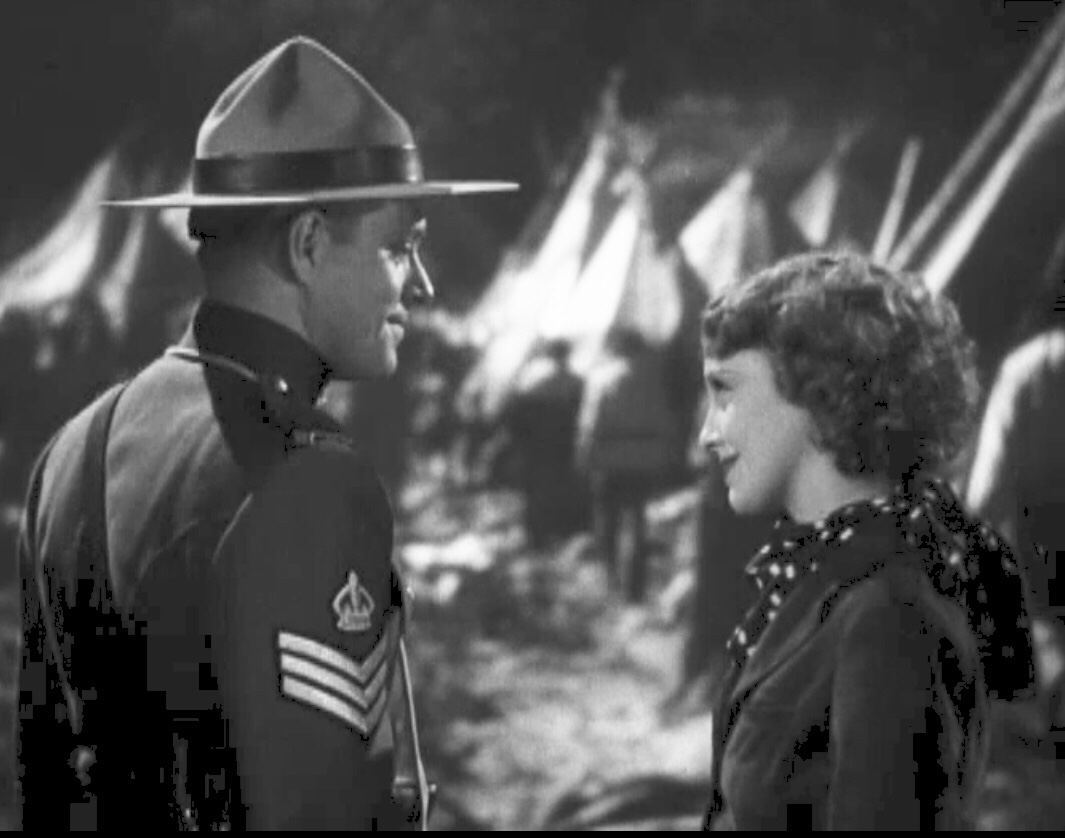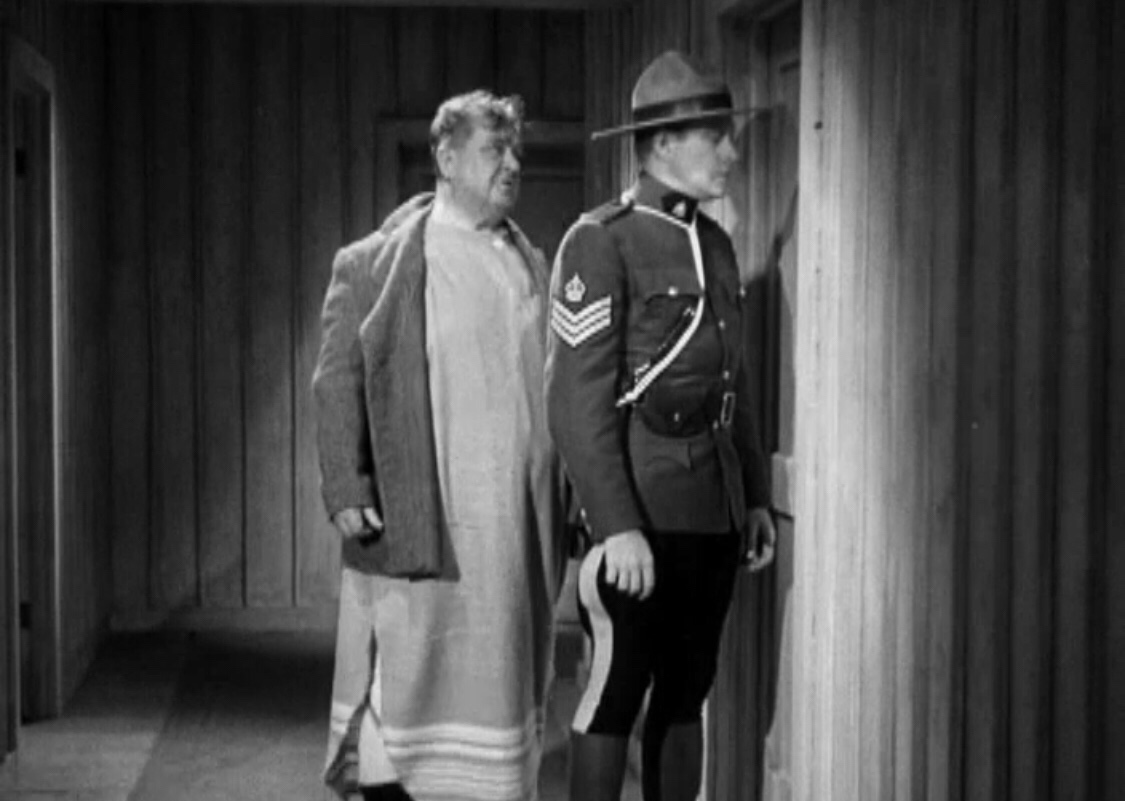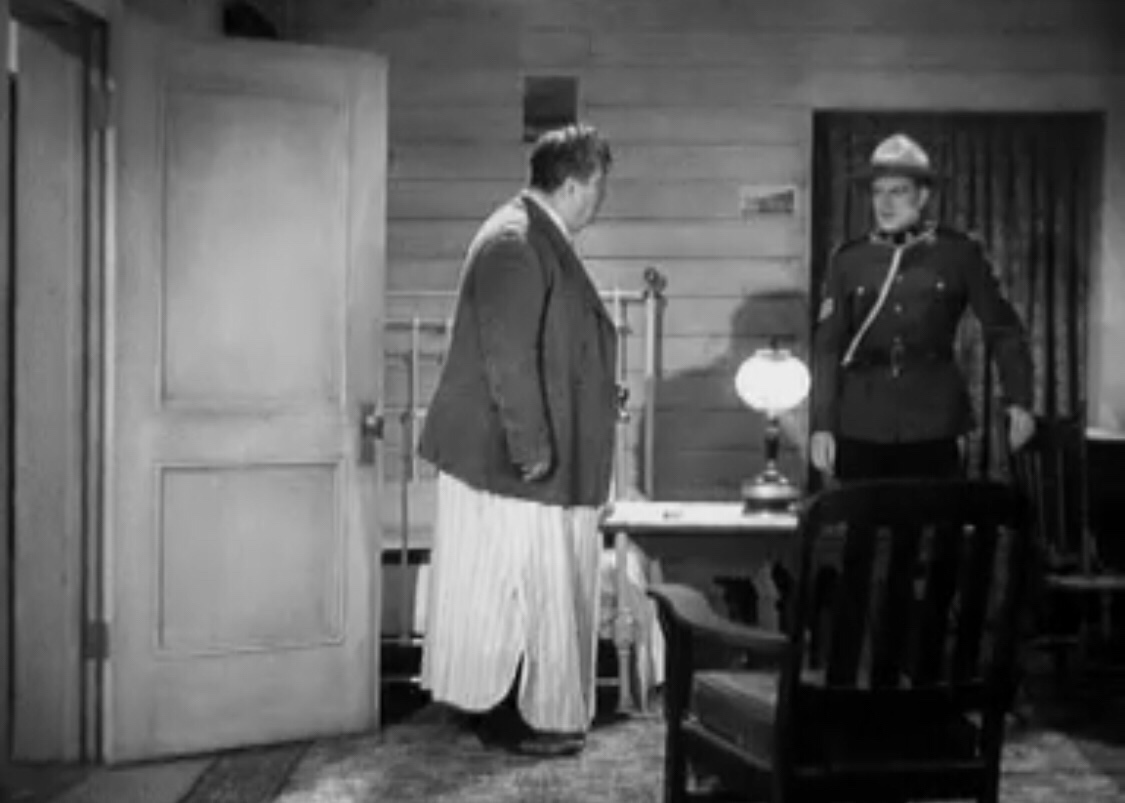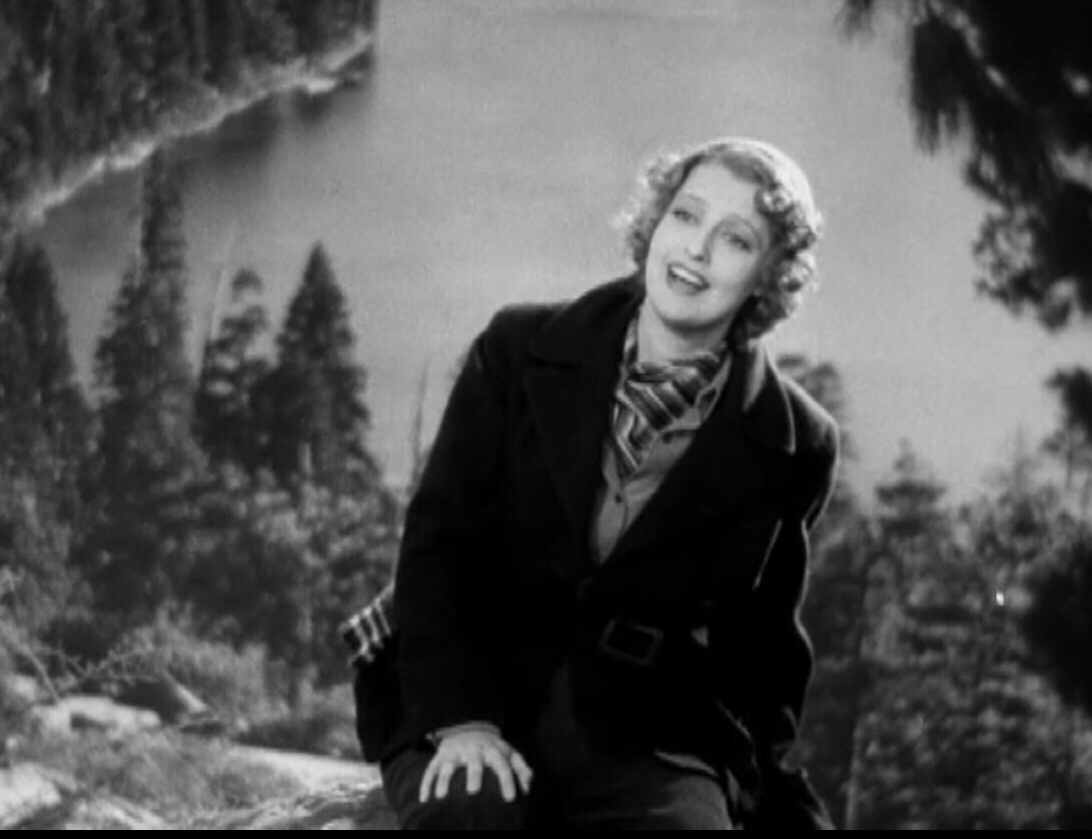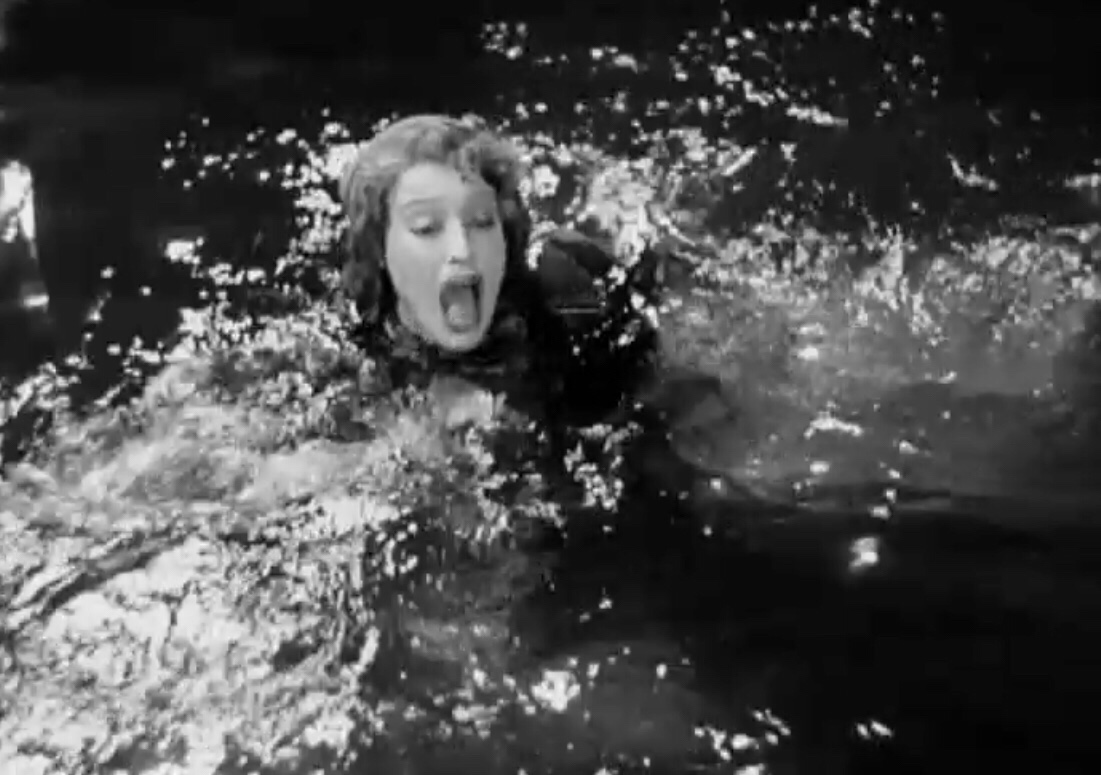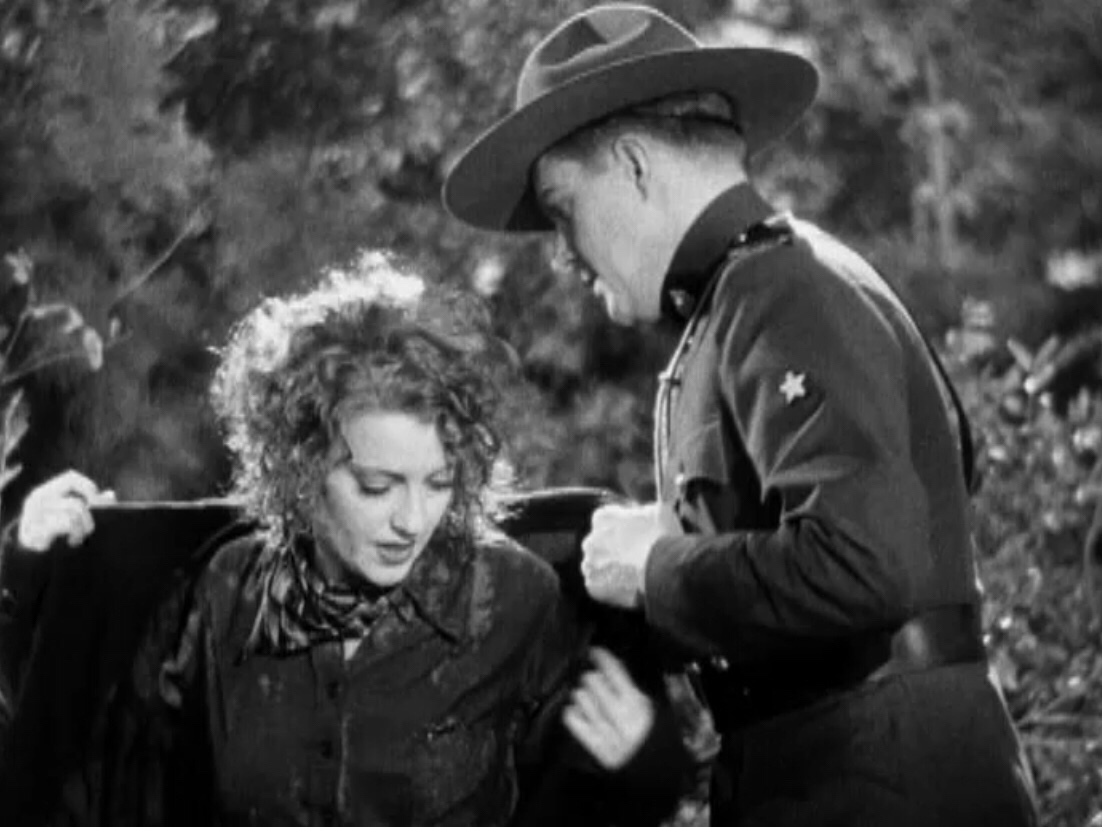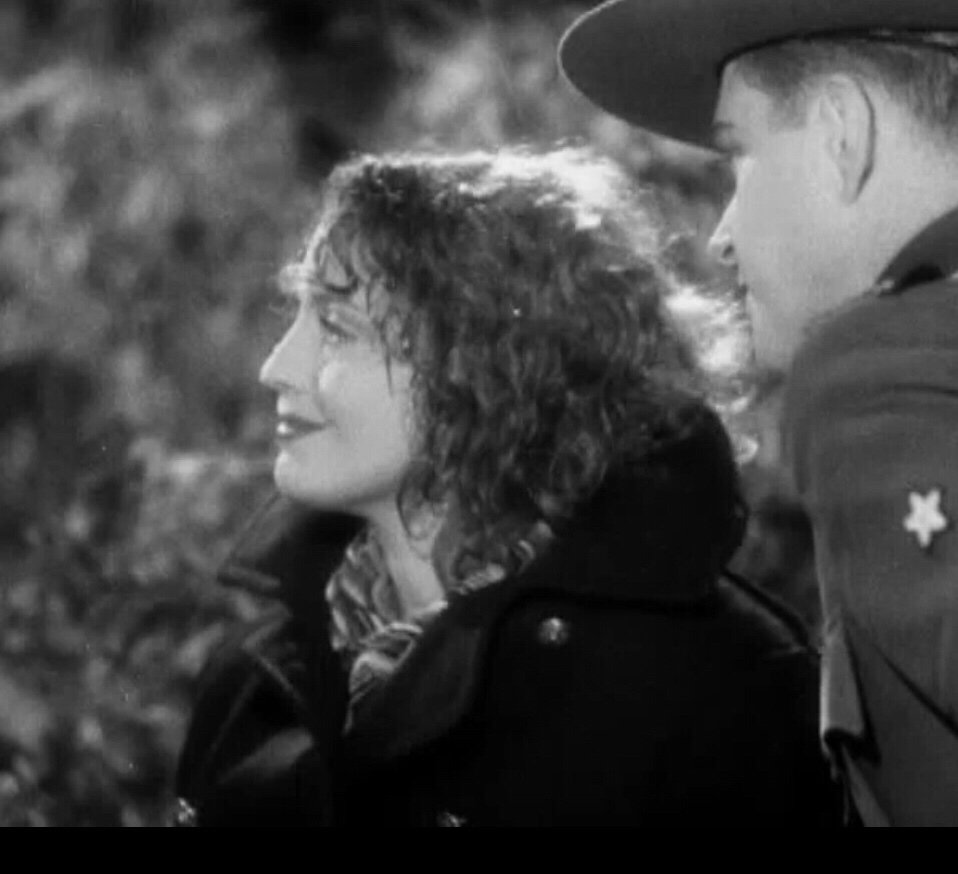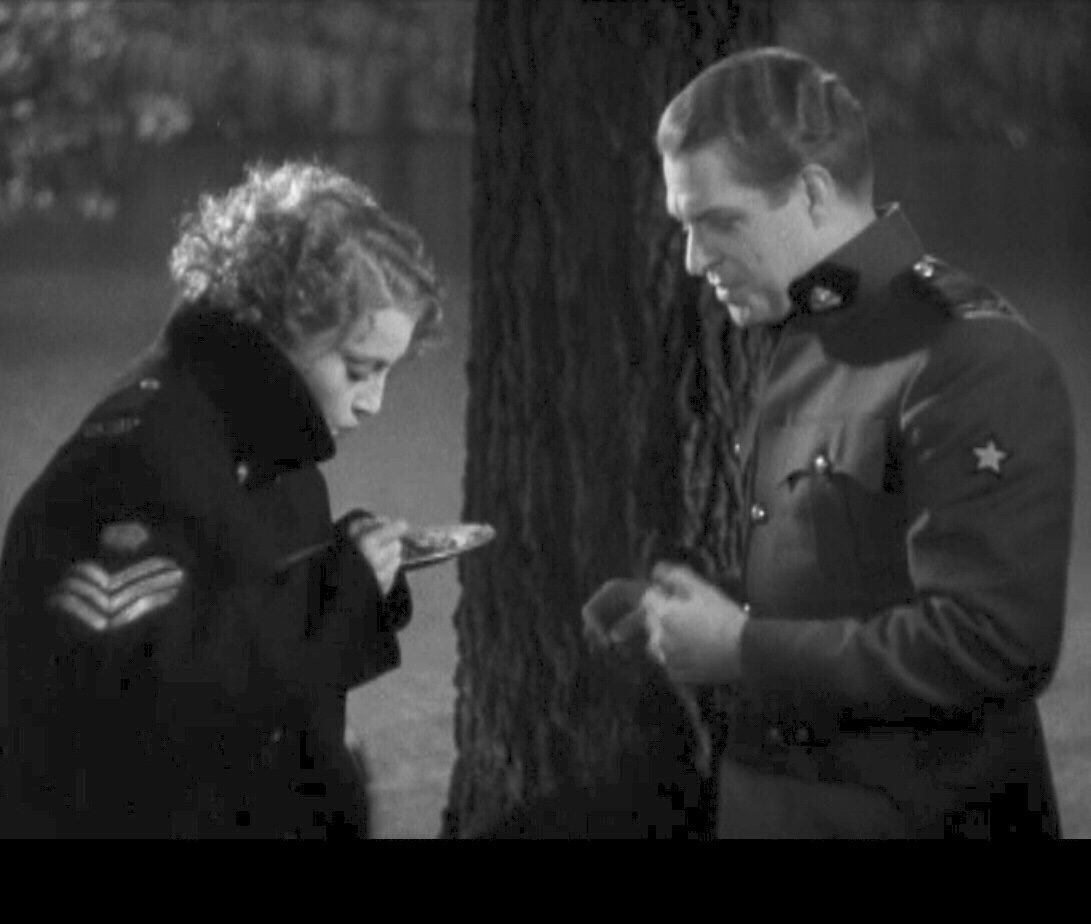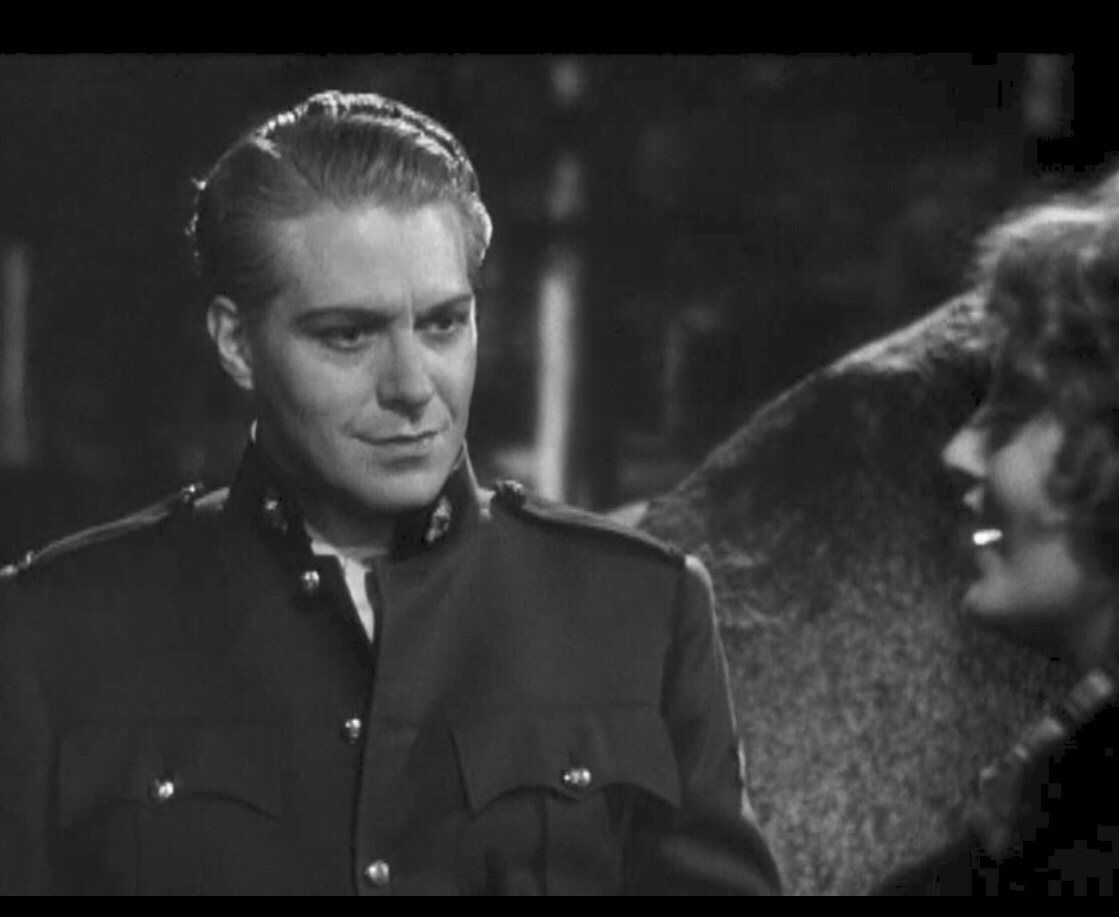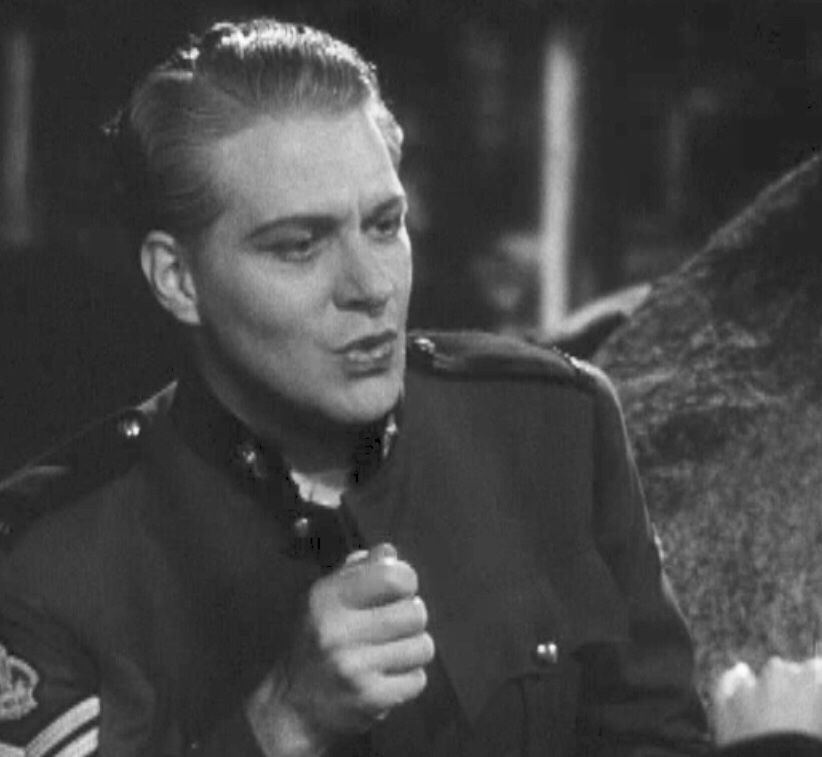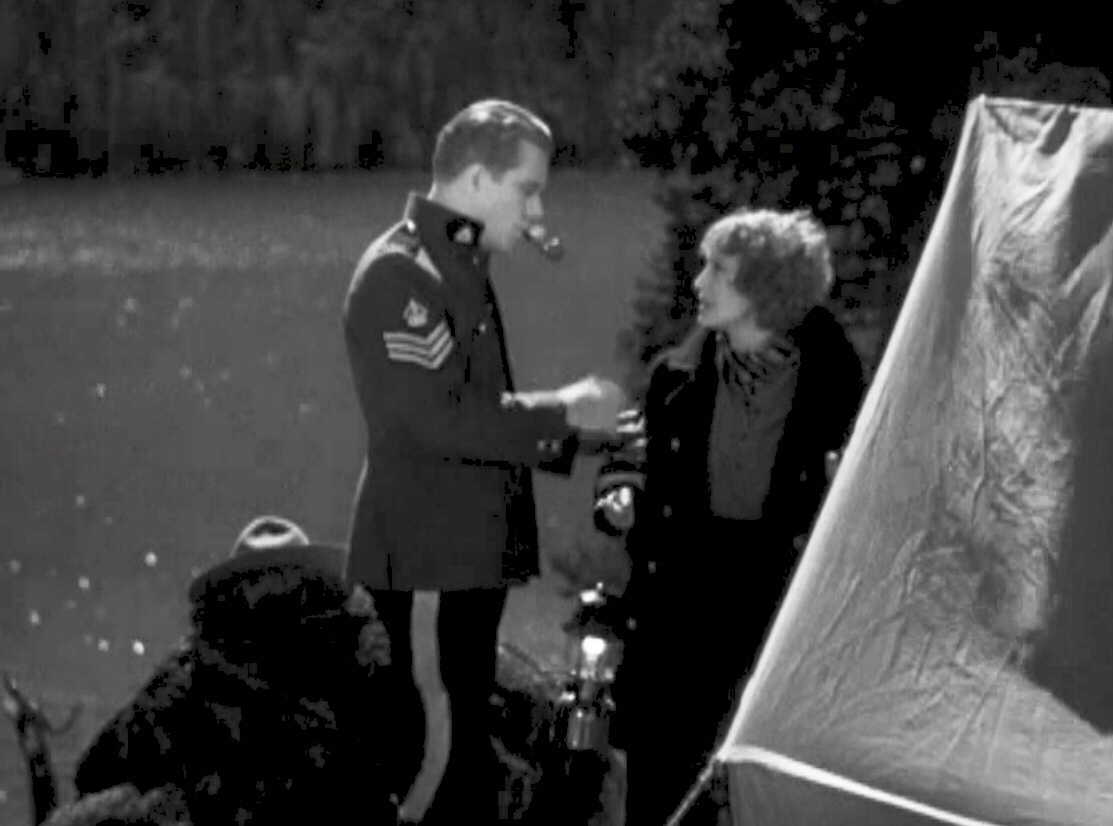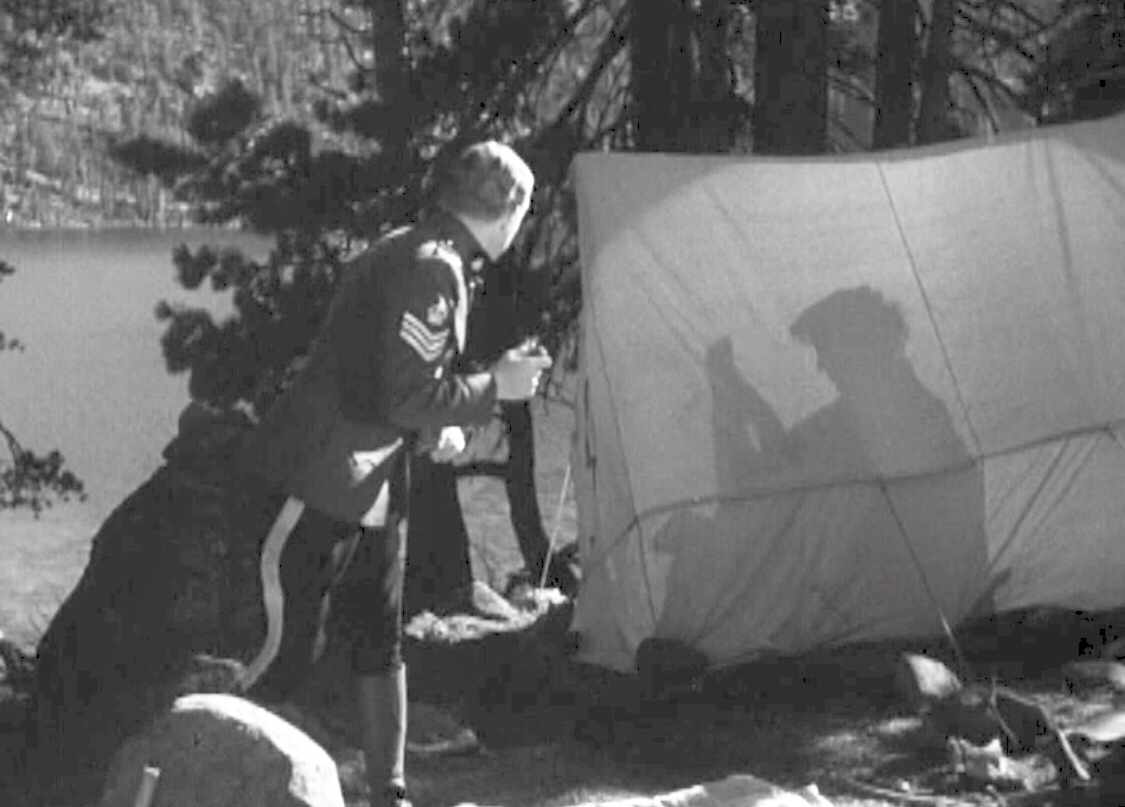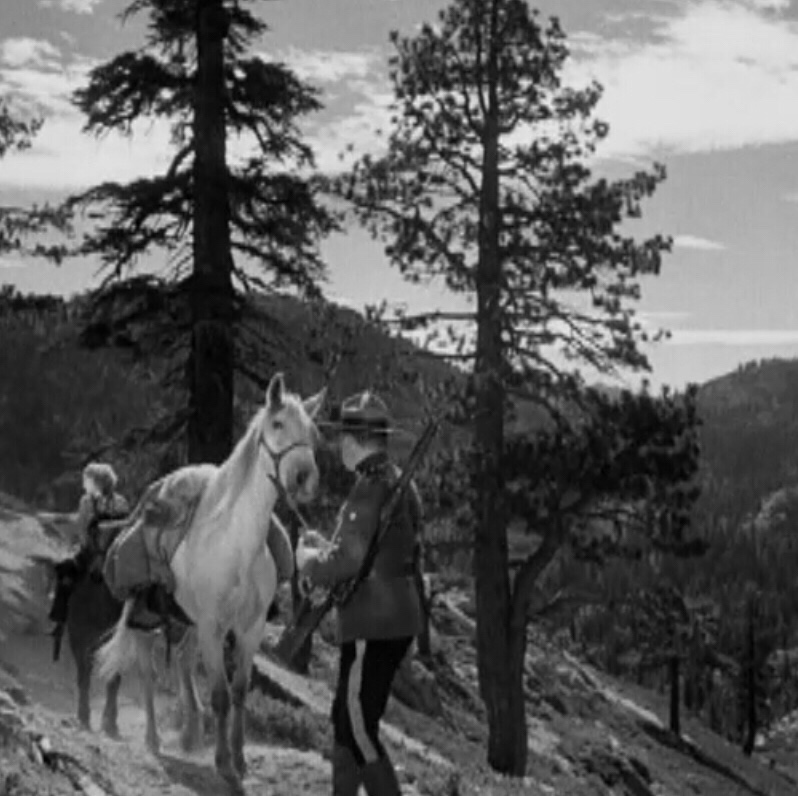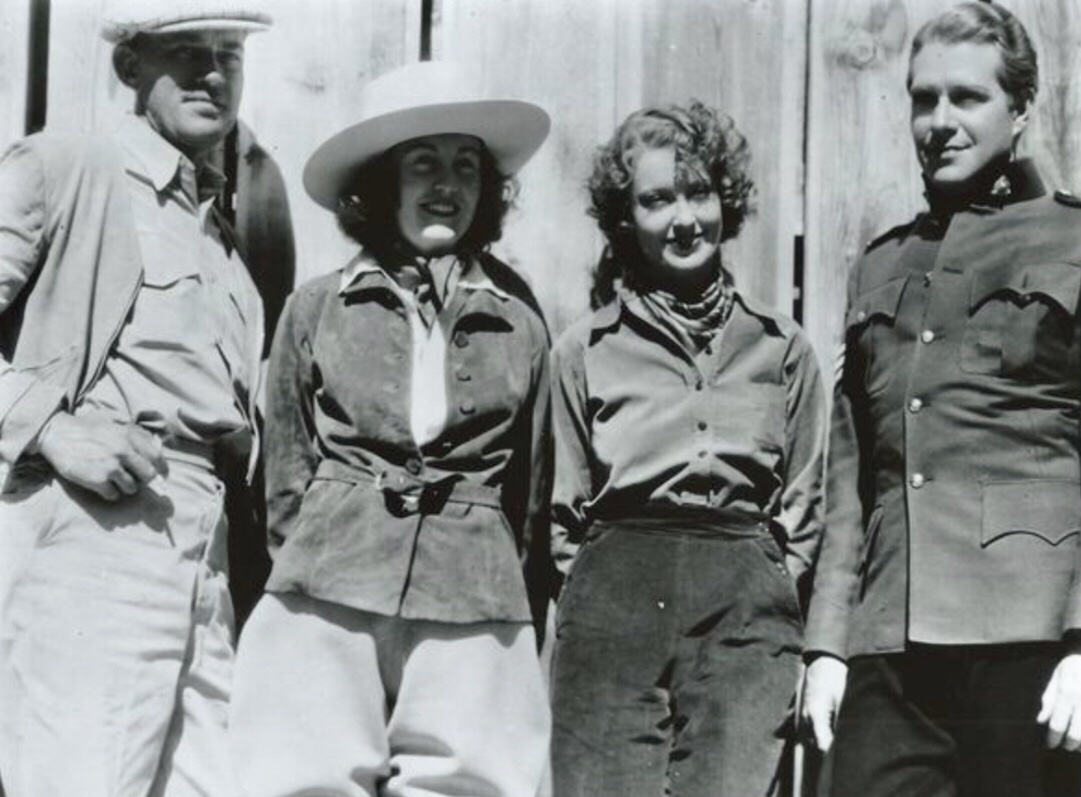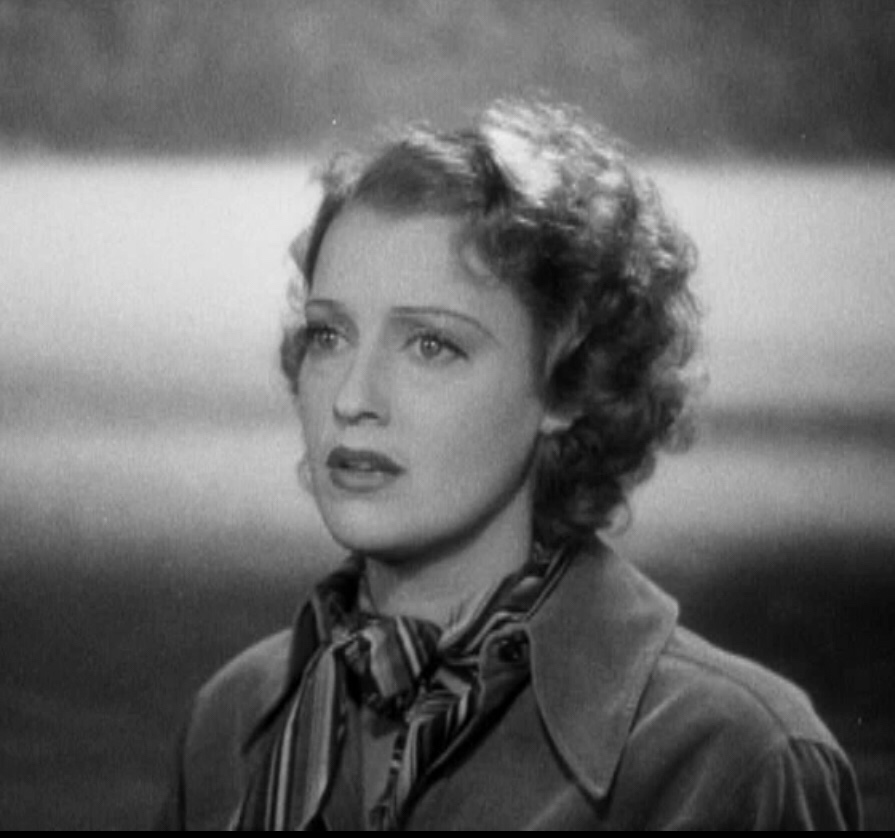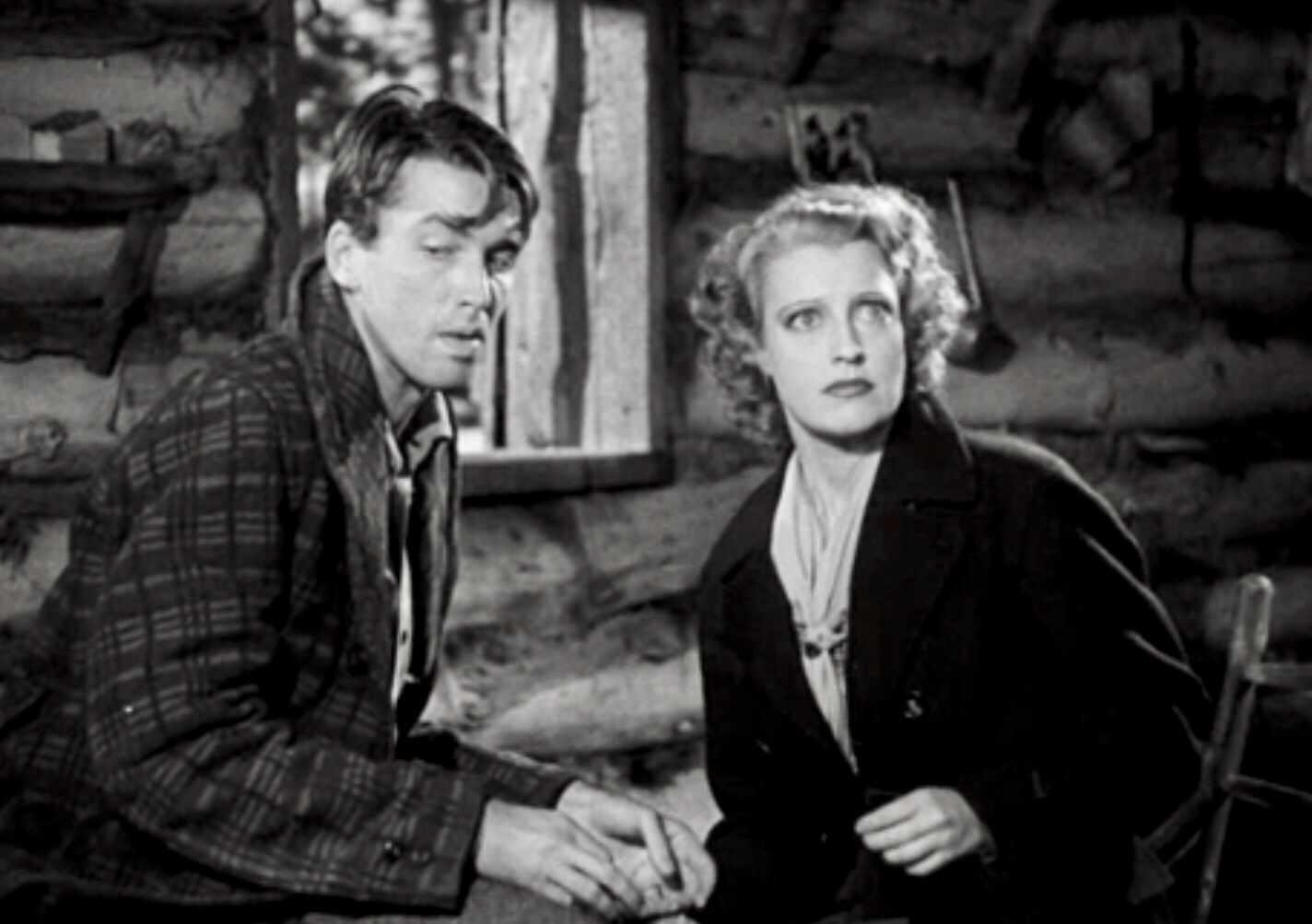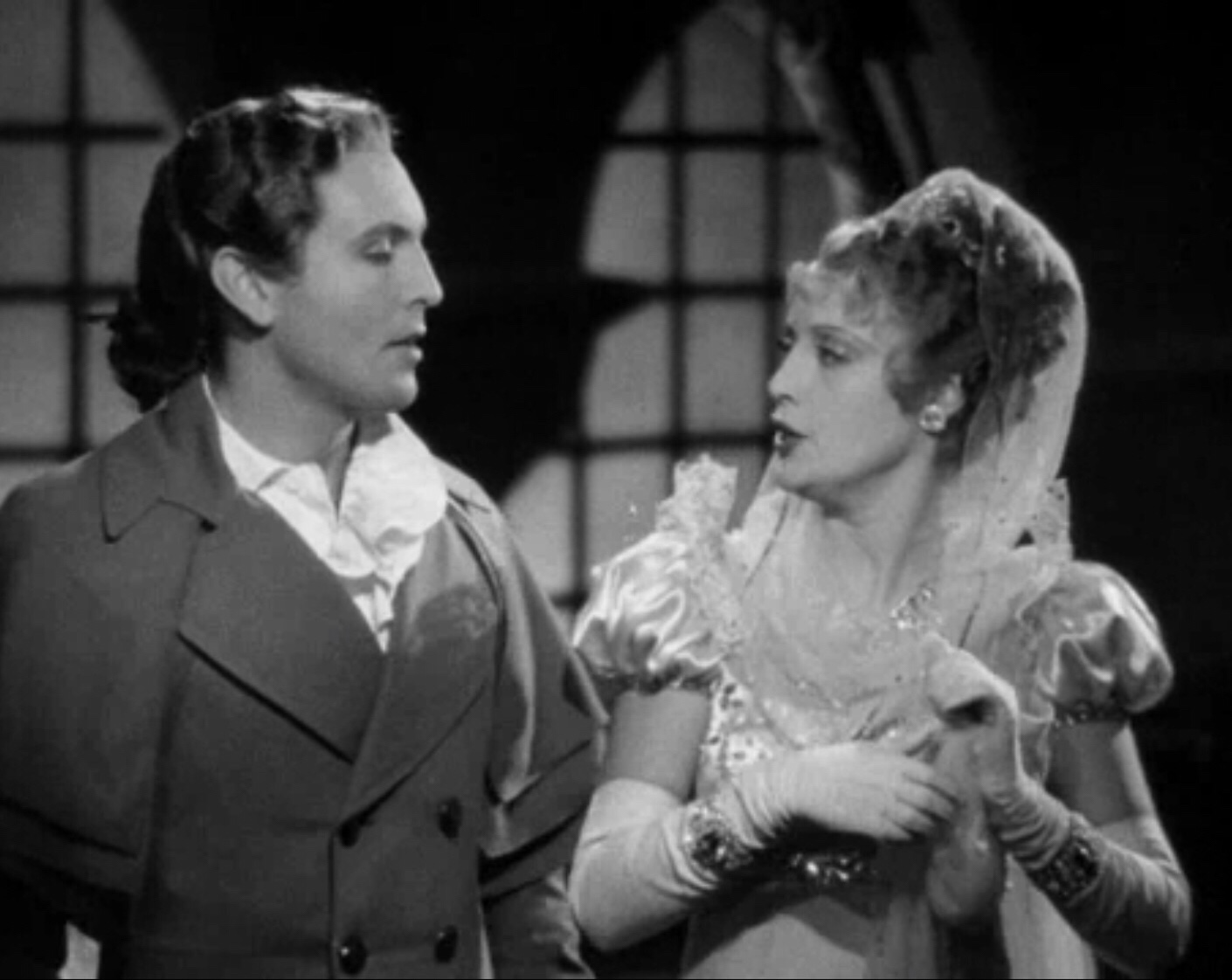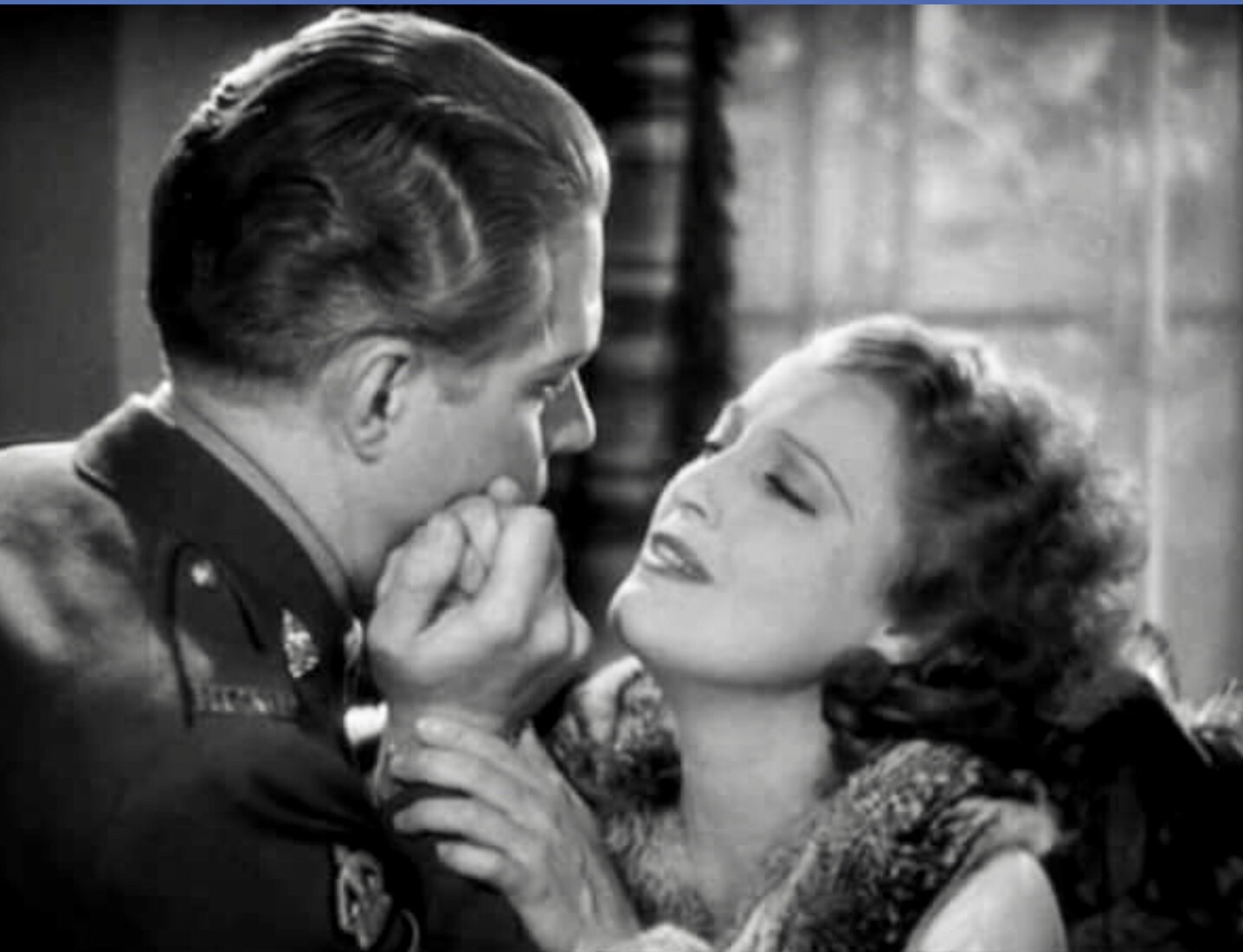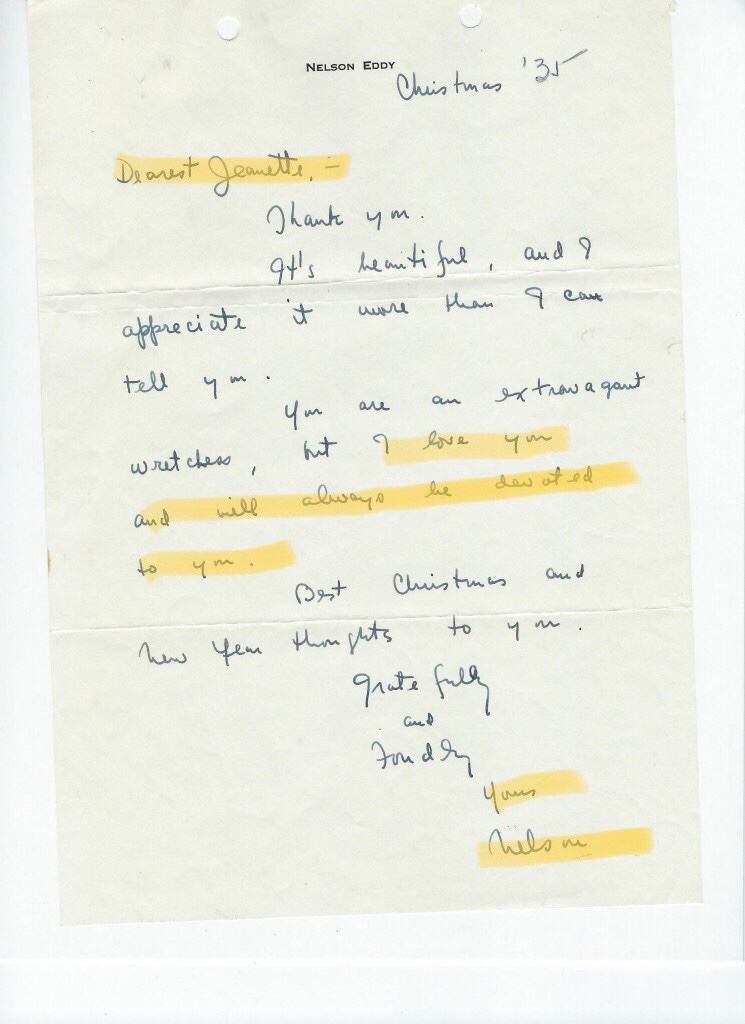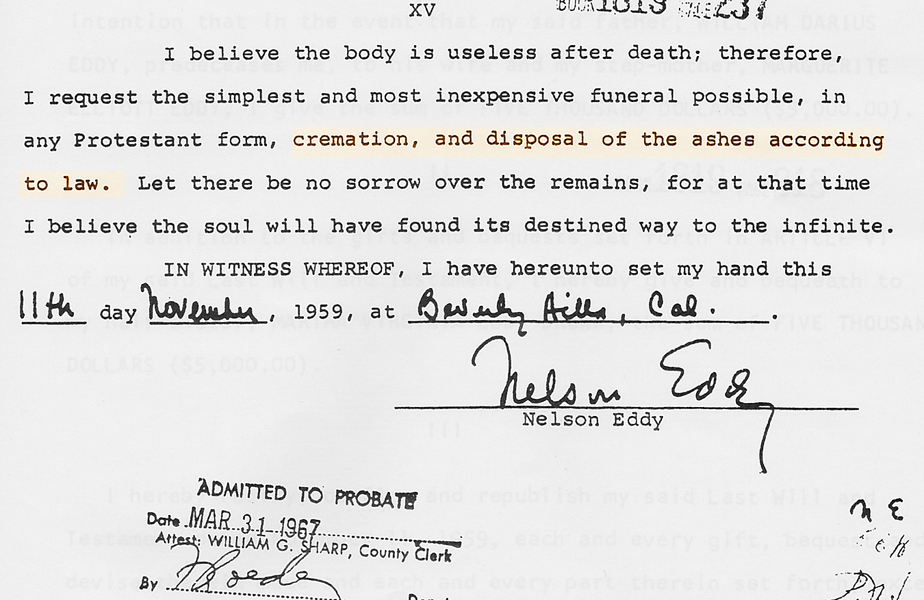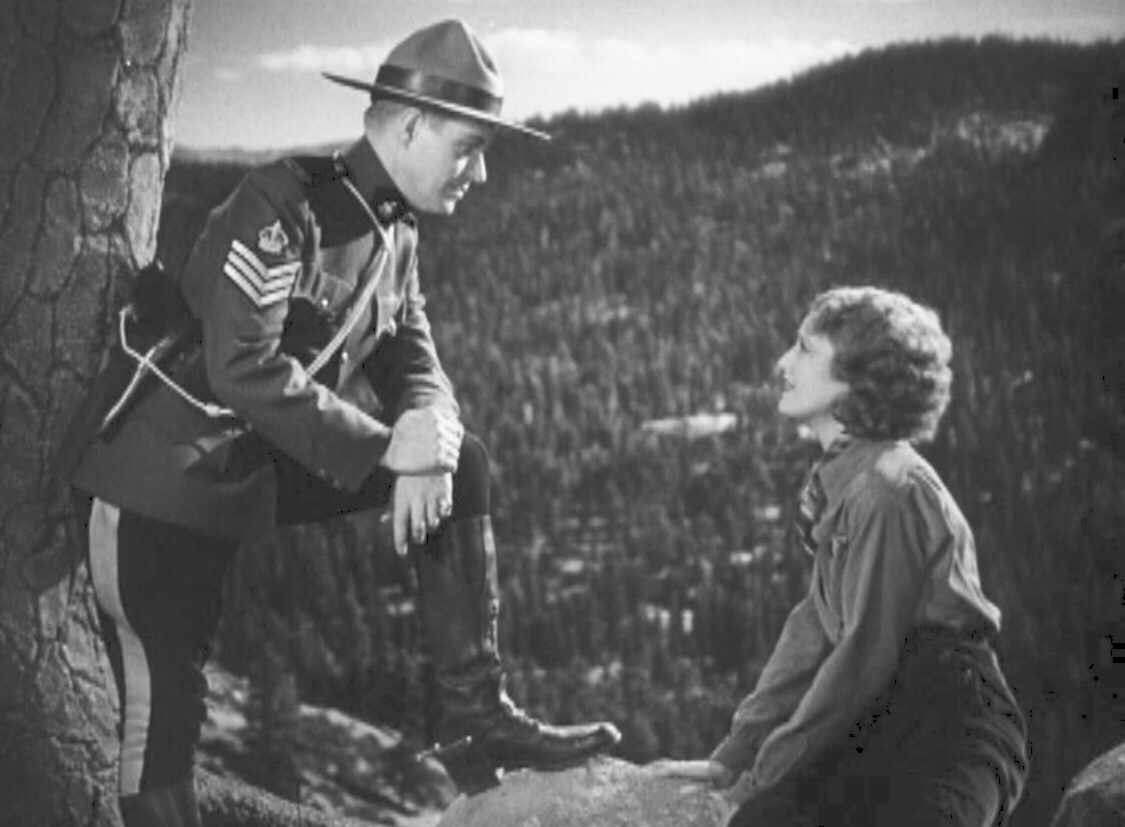Rose-Marie was also perhaps the most vital film personally for Jeanette and Nelson because it was on location at Lake Tahoe where Nelson proposed to Jeanette and she accepted. They exchanged private marriage vows and from then on considered themselves married “by God’s law.” That this didn’t translate into a legally accepted U.S. marriage “by man’s law” is another story. For decades they referred to such other as “my husband” and “my wife” both in letters and sometimes even in public. Over many years they would try to return to Tahoe for “their anniversary” in the fall.
Most candids of Nelson and Jeanette together on this film show his adoration of her whether attentively holding her makeup kit for her or eating her up with his gaze.
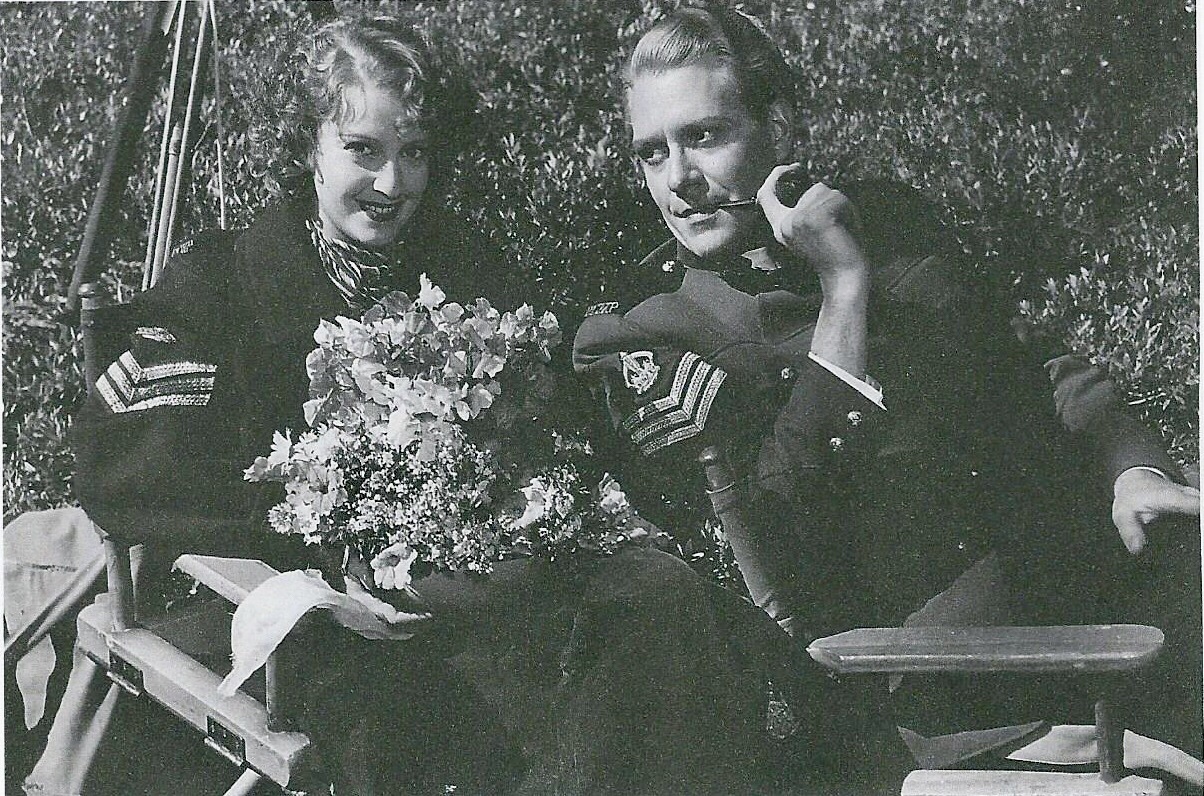
If you have read my book Sweethearts you know that Chapter One opens with Nelson’s sexually explicit diary entry of their activities on their 1943 trip to Tahoe.
Five years later, in 1948, Jeanette noted the date of their Tahoe trip in her desk diary as September 6. The previous day, she and husband Gene Raymond hosted a party for singer Eleanor Steber (pictured below). Nelson and his wife Ann attended and all looked very civilized.
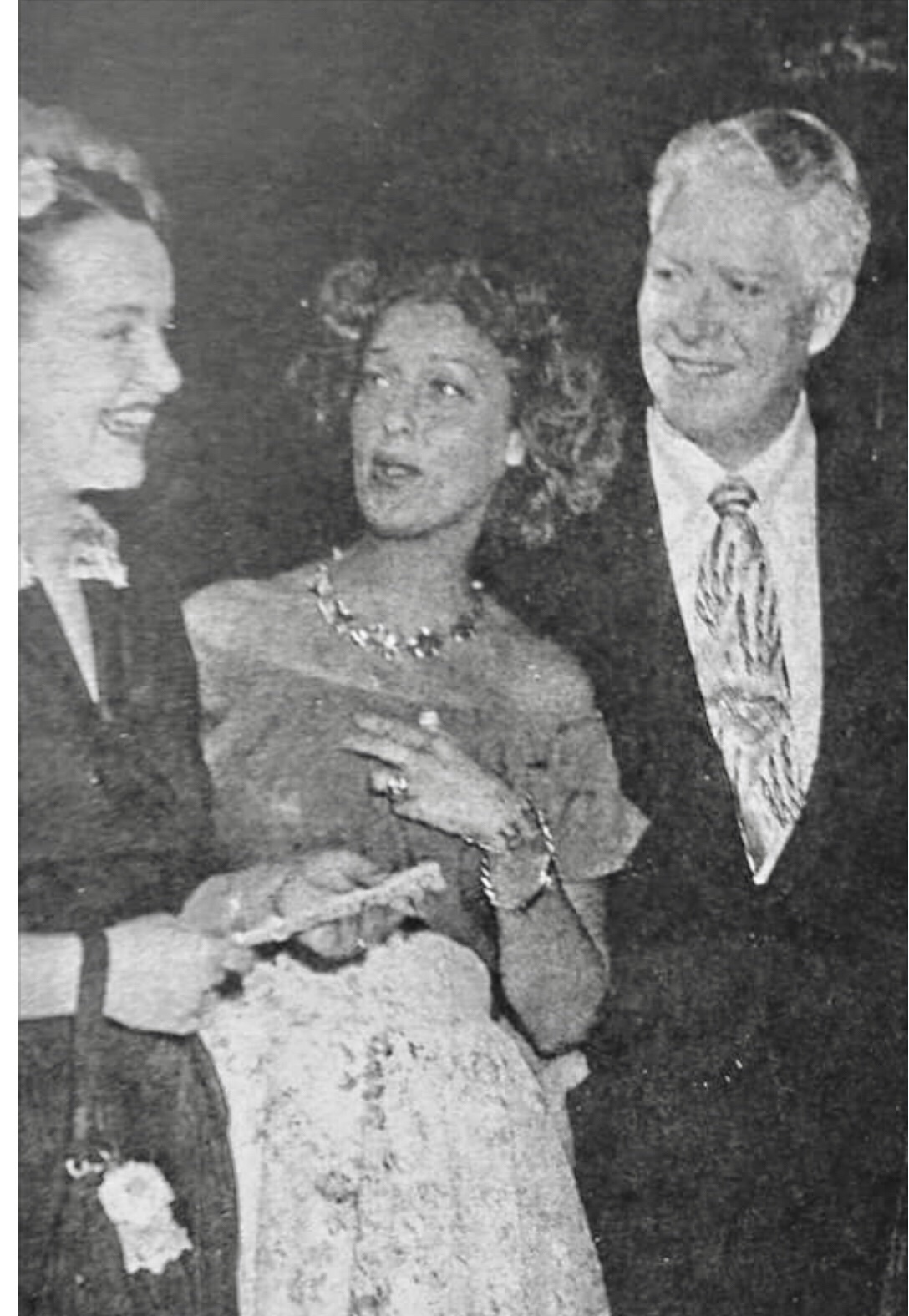
Jeanette smiled happily in photos snuggled into Nelson’s chest with his arm around her even while posing with their spouses on his other side. Next day Jeanette and Nelson hightailed it out of town for Tahoe, as seen below.
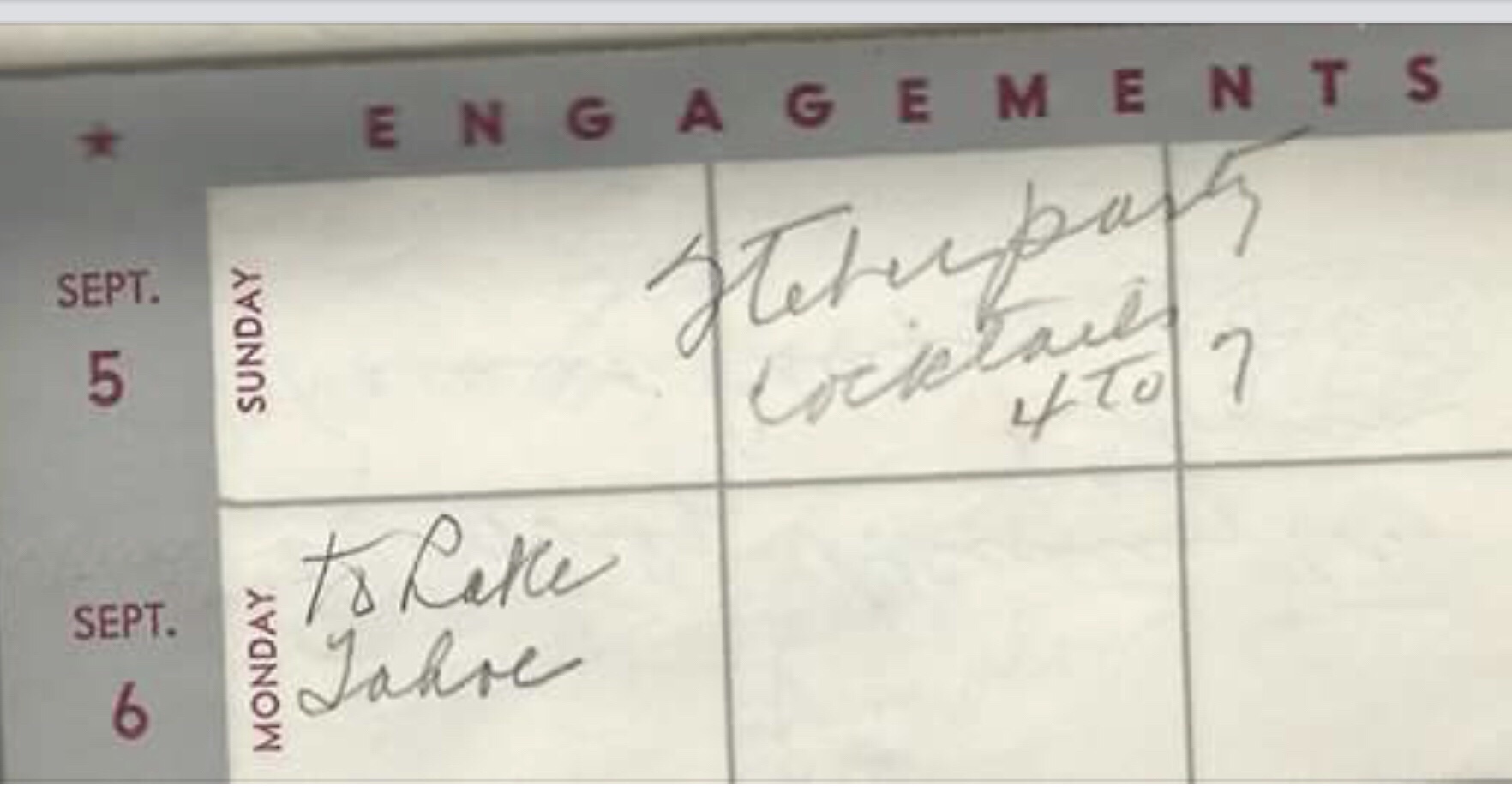
The very year after Rose-Marie filmed, Jeanette made a trip back to Tahoe, presumably for a hopeful if brief reconciliation with Nelson. We can rule out her manager and ex-love Bob Ritchie being there with her, as his best friend Steve Kroeger later updated Ritchie by letter as to Jeanette’s visit with him shortly after, describing her tears and unhappiness at her new engagement to Gene Raymond. (All this is detailed in my book.) We can rule out her new fiancé Gene Raymond being there with her as the telegram below was sent to Gene Raymond from Chambers Lodge (Jeanette and Nelson’s favorite hideout at Tahoe) to Gene in Beverly Hills.
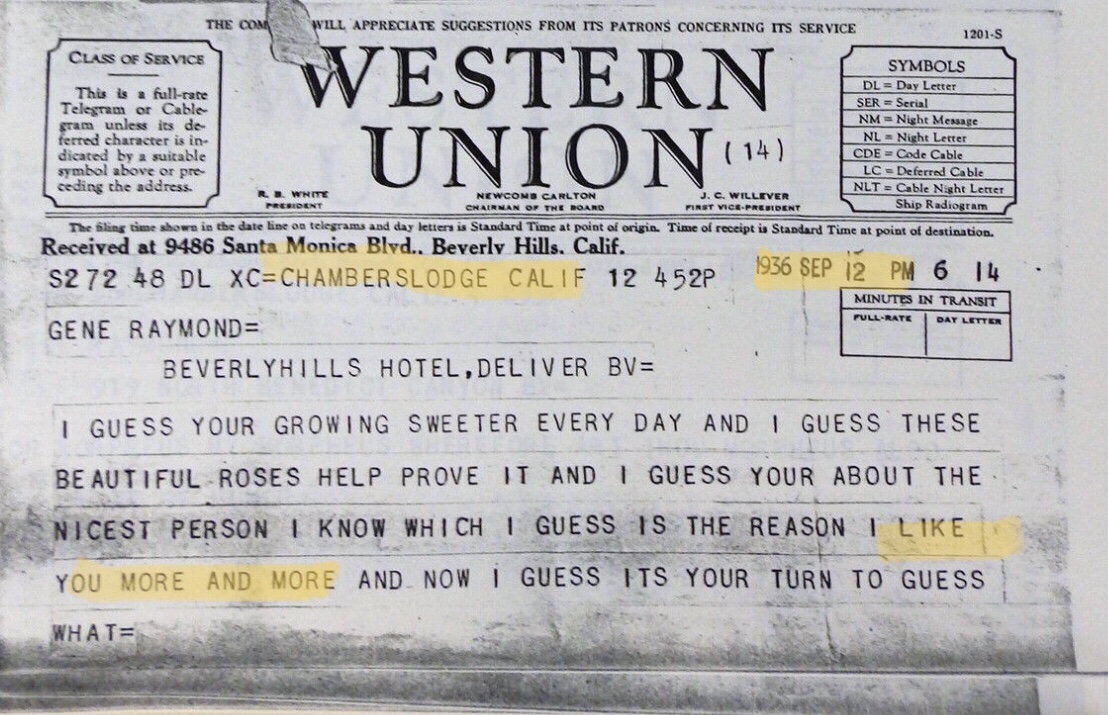
What’s most shocking about the telegram above is that Jeanette has been engaged to marry Gene Raymond since August 20, 1936. This telegram is dated September 12 and Jeanette writes: “I like you more and more.” She LIKES him?
To understand the emotional importance of Rose-Marie and Lake Tahoe in their lives, read through to the very bottom of this article and prepare to be stunned.
Now to the film itself with a screen team that was box office magic!
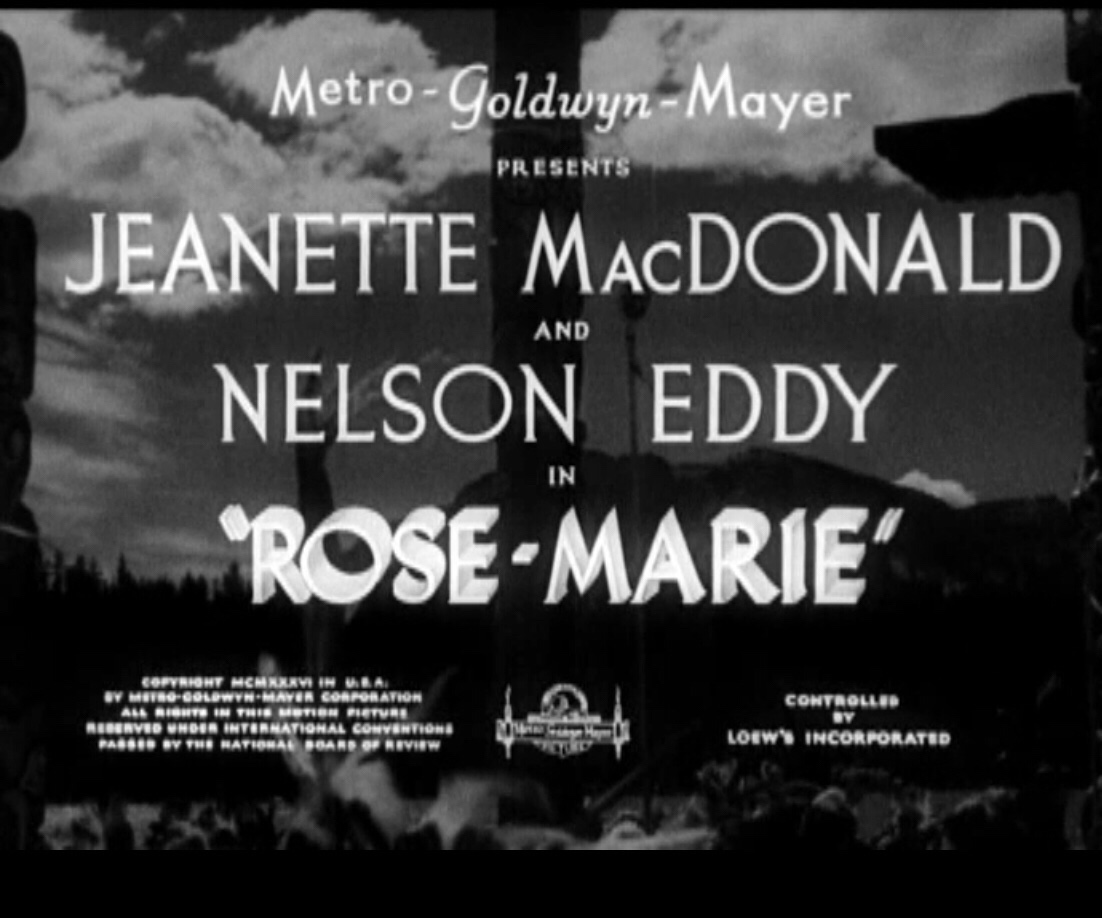
Allan Jones, who was Jeanette’s singing partner in the opera scenes, received 4th billing while a young Jimmy Stewart had 5th billing as Jeanette’s wayward brother.
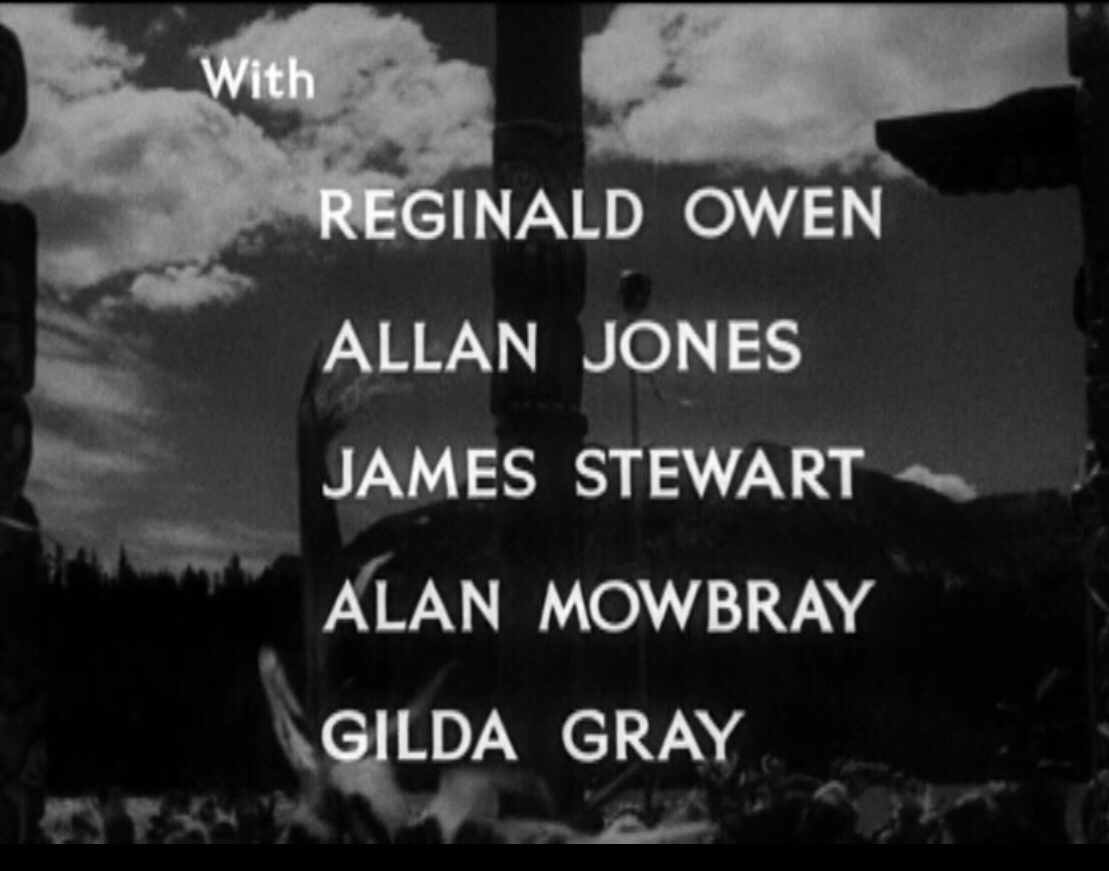
A common misconception is that Rudolf Friml was the sole composer of this operetta. (Only the musical score was used; the story was re-written for Jeanette and Nelson.) I spent many hours visiting with Herbert Stothart, Jr., listening to every record he had of his dad’s film scores. They were stored in his garage and getting moldy. (They were later packed up and donated to a university.) Herb Jr told me how angry his father was that he did not receive equal fame for co-writing the score to the operetta Rose-Marie…even though he also scored the movie version as well.
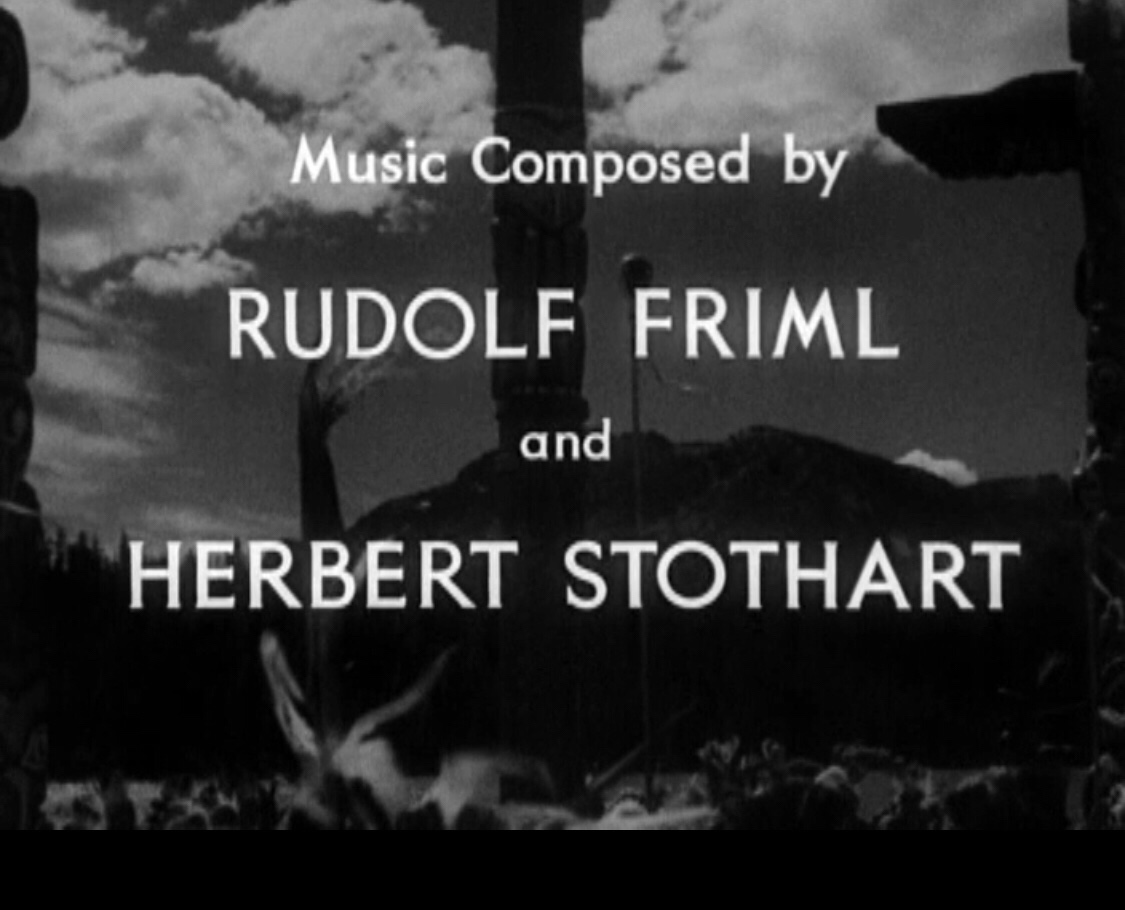
Note in the cast list below: David Niven has a walk-on role but is listed as David Nivens.
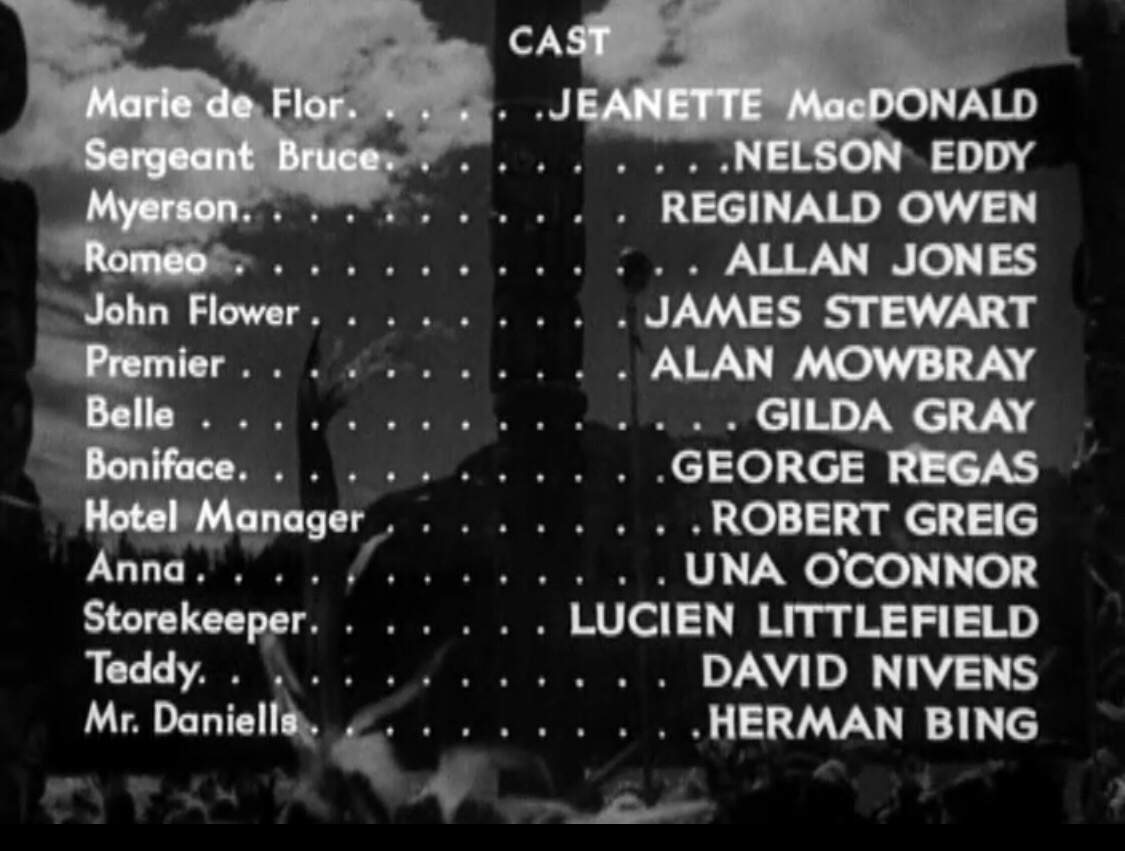
The movie opens with Jeanette as a gorgeous, ethereal opera singer in Romeo et Juliette who makes opera look amazing. The result of her performance? A whole generation of aspiring singers went off to train in opera because Jeanette made it look so natural and “cool”. The following year, Nelson (the actual opera singer of the two at that time) cemented this craze for opera when they dueted in Maytime.

10:00. Here is David Niven in his brief role as “Teddy,” Jeanette’s spurned suitor.
26:00. Nelson finally makes his appearance. After amazing actual footage of real Mounties in Canada, Nelson sings against film footage of Mounties in the background. The scene looks cheap and this was just the first attempt to subtly ridicule Nelson in the film (not by the director but by studio orders).
In Sweethearts I describe the attempts of makeup men Bill Tuttle and Fred Phillips (both who then worked under the credited makeup man Jack Dawn) to overdo Nelson’s makeup in a ridiculous manner. In a very lengthy interview with Phillips, he told me that yes, Jeanette was promised MGM’s first color film and it was originally to be Rose-Marie. He verified that Mayer became furious with Nelson (for reasons explained below) and decided to “sabotage” Nelson even after the Technicolor plan was dropped. Phillips, probably most famous for later inventing Spock’s ears in Star Trek, told me:
“They did decide against color….the studio would never spend money to re-shoot footage…we were the best in the business. You think we didn’t know our job or made him (Nelson) look bad on purpose? You did what you were told and didn’t ask questions.”
Below, Fred Phillips with Leonard Nimoy.
35:00. One of the most amusing scenes in Rose-Marie was Jeanette with Gilda Gray. Director Woody Van Dyke used a lot of scruffy, comedic bit players to add authenticity and comedy to the scene.
57:00. The Indian maiden dancing below is actually Mary Anita Loos, niece of screenwriter Anita Loos (San Francisco, Saratoga, The Women, I Married an Angel, Gentlemen Prefer Blondes, etc.). When I interviewed Mary Loos, she confessed that she lied about being an Indian and didn’t know how to dance when she landed this role. Mary was the one, when things went south with Nelson, who delivered letters from Gene Raymond to Jeanette.
59:00. Curious moment: What is behind their looks and the smug lilt in their voices as Jeanette and Nelson discuss “getting their man”? There’s something going on here…
1:05. Blooper: the hotel manager Robert Greig is wearing one sleeping gown before Nelson walks into Jeanette’s room…and a different gown once they’re inside!
1:08. Jeanette’s “Three Blind Mice” is charming but according to Fred Phillips and others, there was supposed to be an “echo song” between Jeanette and Nelson that was cut due to the efforts to minimalize Nelson’s presence in the film.
1:09.The closeups of Jeanette floundering in the water were shot in the studio water tank. The long shots of Nelson saving Jeanette were filmed with their stunt doubles.
For those familiar with how film scoring works, the way Herbert Stothart weaves the various theme melodies throughout this particular scene and a few others is nothing short of brilliant. His fluidity in moving forward the story and emotions in all his films has been highly underrated in Hollywood history. Stothart went in to win an Oscar for his original score for The Wizard of Oz.
1:10. It’s hard to see unless you’re watching a sharp 35mm print but sprinkles of water fly off Jeanette’s hair as she shakes her head which makes Nelson look even more stoic for not reacting.
Their chemistry together in these outdoor scenes is very noticeable. Some have accused Nelson of being “wooden” in this film but he himself explained that the uniform was very rigid and he was forced to wear the Mountie hat in most of the scenes because that was authentic for a Mountie on duty. In the scene where he lifts Jeanette onto a tree branch to watch the Indian dance, Nelson claimed his hat nicked Jeanette on the nose and it had to be covered up with makeup before they could continue the scene.
1:15. The beans and bacon scene. It took so long to shoot that Jeanette was vomiting between takes. They also had to pull over because she was carsick driving up to Tahoe. It wasn’t till some time after Nelson proposed to her that Jeanette realized she was pregnant.
1:20. Nelson first singing “Indian Love Call” to her as a solo. He meticulously plays with his pipe, almost caressing it. If you can take your eyes away from Nelson and look closely at Jeanette (hard to do in this scene, I know), her fingers move in unison with his although they do not touch; a very sensual moment indeed.
1:22. From 4 different people I was told stories about this tent scene. That they privately filmed an R-rated version of it to show as a home movie gag. That they re-enacted the scene more realistically in an X-rated way when privately returning to Tahoe; role-playing, if you will.
From Sweethearts:
[A visiting writer] watched the two stars together on the set, sitting side by side. Nelson was dozing and Jeanette was “just looking [at him] and her eyes are filled with dreams.”
Nelson would later recall in an interview the many hours off set that Woody provided for them to lose themselves, riding on horseback in the area, finally having some private time to get perspective on their lives.
Their issues had never been physical compatibility but rather professional competition. Nelson did not want a career wife. Despite taunts that he was “the singing capon,” he was actually a highly sexed guy who wanted his wife at his side at all times, tending to him and raising his kids. A happy, stable home life was important to Nelson as his childhood was traumatic; he dropped out of school at age 14 to work and help support his mother after his physically abusive father walked out on them. Jeanette was unwilling to give up all she had worked so hard for; she felt it was unfair of Nelson to demand she give it all up. Both were strong, competitive personalities and weren’t inclined to budge; Nelson wanted to be the breadwinner and not “play second fiddle to her career.” Against the beautiful Tahoe backdrop, Jeanette finally agreed she might cut down her work load enough that she could juggle being both wife and movie star. They seemed to have worked out their differences…until Jeanette found herself pregnant.
Poor Ruth Van Dyke, pictured here with her husband and with Jeanette and Nelson who are smugly smiling as though they’re sharing a secret. Ruth told us that this Tahoe trip was supposed to be a sort of belated honeymoon but Woody was always running off to deal with Jeanette and Nelson’s personal drama. As detailed in Sweethearts, Mayer refused to let them marry, blamed Nelson for being a troublemaker and insisted Jeanette get an abortion. She did not do so but miscarried; Woody nursed her through that and then tried to deal with Nelson who called off their engagement and broke up with Jeanette. With frightening speed, the love fest between the two stars was over. It would be a long time before Nelson believed Woody’s version of events. (I verified this as well with Jeanette’s sister Blossom, who went directly to Tahoe as emotional support for her sister after this happened.)
1:33. In certain shots like this, you can see the bags under Jeanette’s eyes as the strain of this new development took its emotional toll on her.
1:34. A young Jimmy Stewart makes a strong impact in his one sequence in the film. On the rebound, some months later, Jeanette briefly dated him.
1:42. Allan Jones played her opera Romeo in the opening scenes and is pictured here with Jeanette in their Tosca excerpts. The opera scenes were filmed upon their return to Los Angeles.
1:47. The final scene of the film. They had been forced to see each other professionally back in LA and of course this led to them ending up back in the sack for a “27 hour marathon”, according to Nelson. He wanted her to join him on his upcoming national tour and not film San Francisco. She was concerned about his ability to remain faithful to her as evidenced by his activities after they broke up; he was like a rock star with adoring fans and other women throwing themselves at him and he had little resistance when they were on the outs. The reconciliation attempt failed and they decided to just remain friends.
It was after this marathon that the scene below was filmed. As Nelson explained and I quoted in Sweethearts:
Their emotions in that scene were real and the tenderness with which Jeanette caresses and kisses him was real.
By Christmas 1935, Nelson was already going through withdrawals. Even though he and Jeanette had supposedly “moved on”, he wrote her on Christmas, “Dearest Jeanette… I love you and will always be devoted to you…your Nelson.”
Rose-Marie turned out to be a huge hit. In later years, Nelson as the Mountie was spoofed as Dudley Do Right with his redheaded girlfriend Nell.
Later generations remember Carol Burnett and Harvey Korman spoofing them on her comedy show… or watching the Ocean Spray cranberry-apple juice commercial in which the Mountie sings “Sweet-tart” to his girl (although the song sung is from Maytime).
For Jeanette and Nelson, Rose-Marie and Lake Tahoe remained a treasured moment of happiness in their years together. So much so that they agreed that some of their ashes were to be scattered on the very spot where they made love after Jeanette accepted Nelson’s marriage proposal. When Jeanette’s instructions to be cremated were not honored, Nelson was distraught but still wanted part of his ashes scattered there anyway. He returned to Tahoe, pointing out the exact location to the person entrusted to carry out this task but his written wishes (in his will) were also ignored and he was not cremated.
Watching the Jeanette-Nelson Rose-Marie today, one cannot help but be caught up in their amazing chemistry on the screen, once again mirroring what was going on in real life. Note that there was a silent Rose-Marie filmed in 1928 starring Joan Crawford and a 1954 version with Howard Keel and Ann Blyth. But this Rose-Marie is the definitive version. As Howard Keel said to me: “I never saw the need to remake Rose-Marie, why touch a classic?”
© 2018 by Sharon Rich, all rights reserved. The above quotes and book passages are from Sweethearts (© 1994, 2001, 2014 by Sharon Rich) also available at Amazon as a Kindle or softcover.
